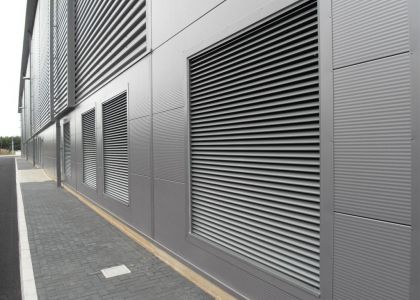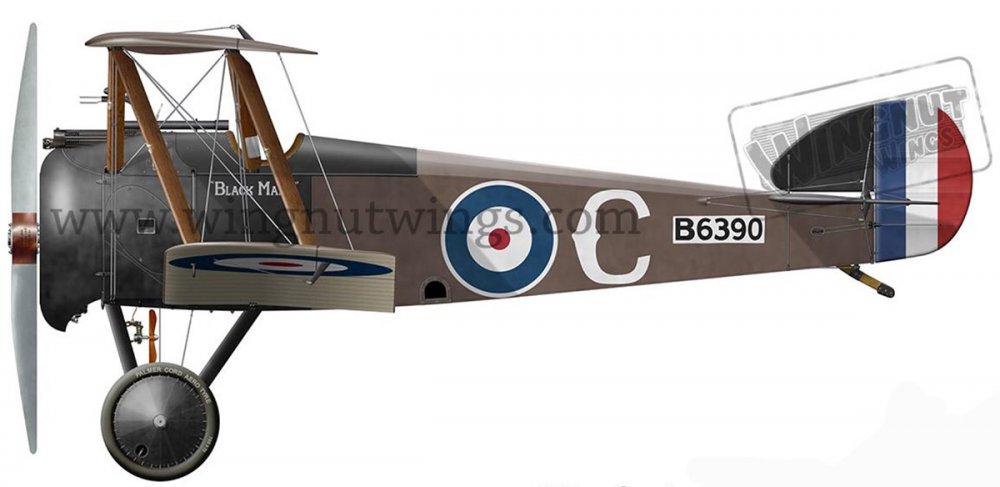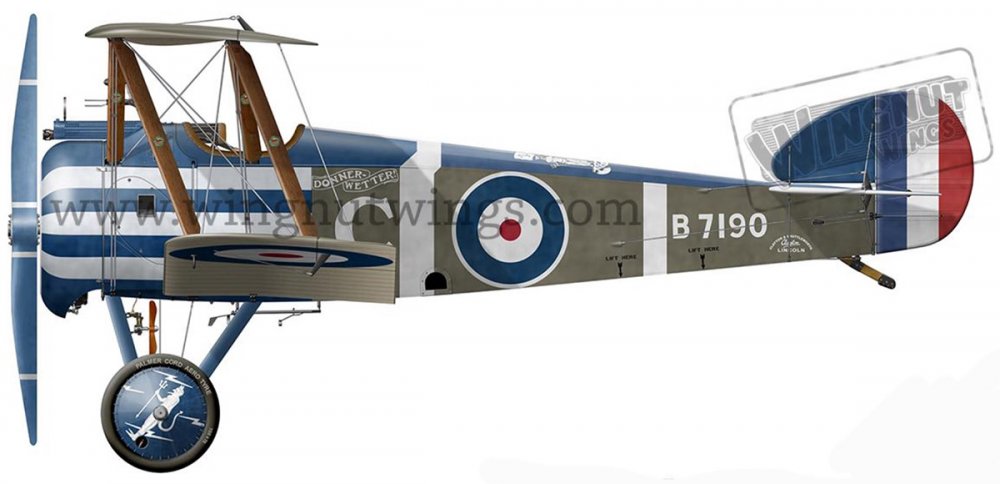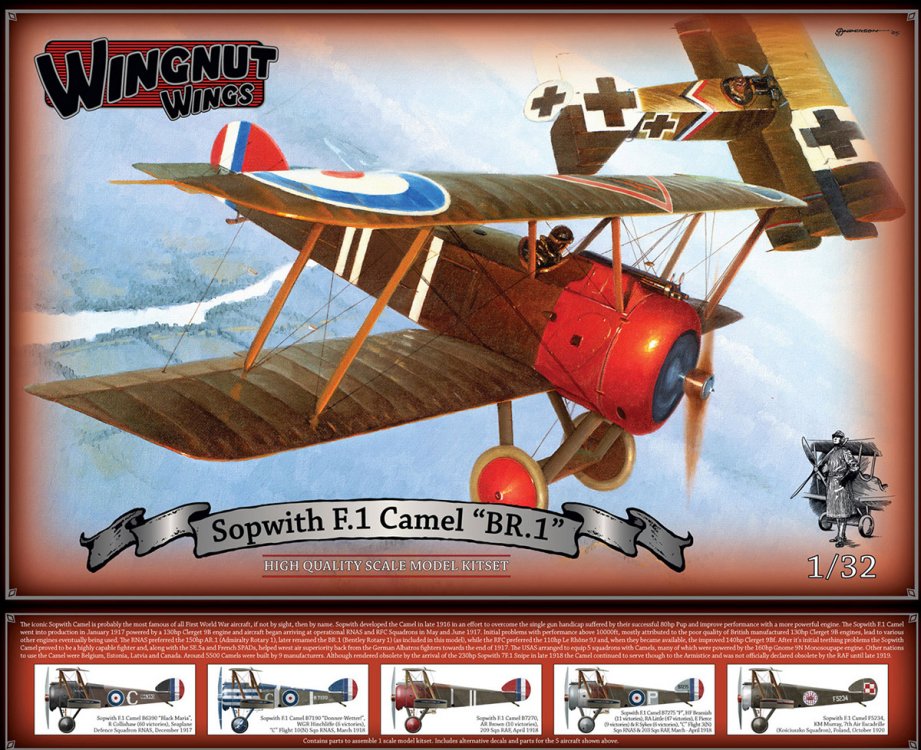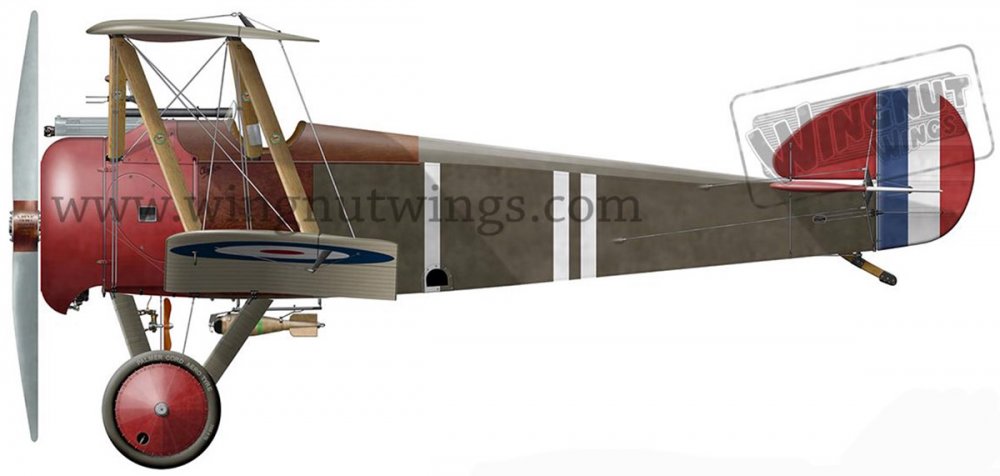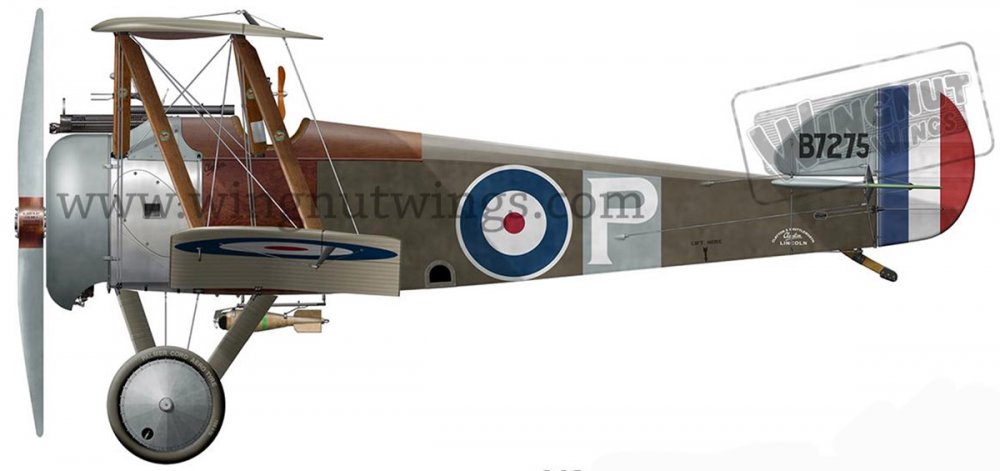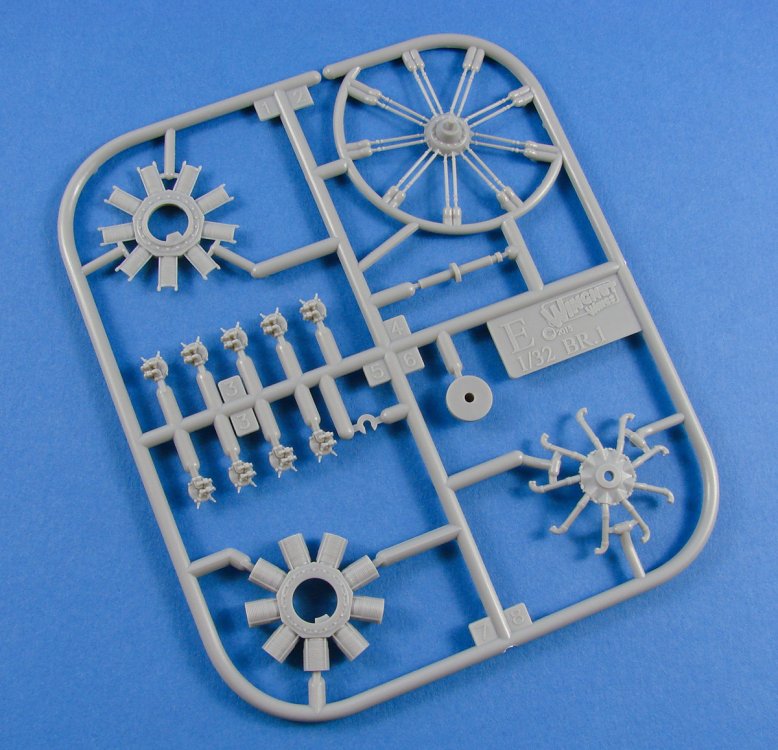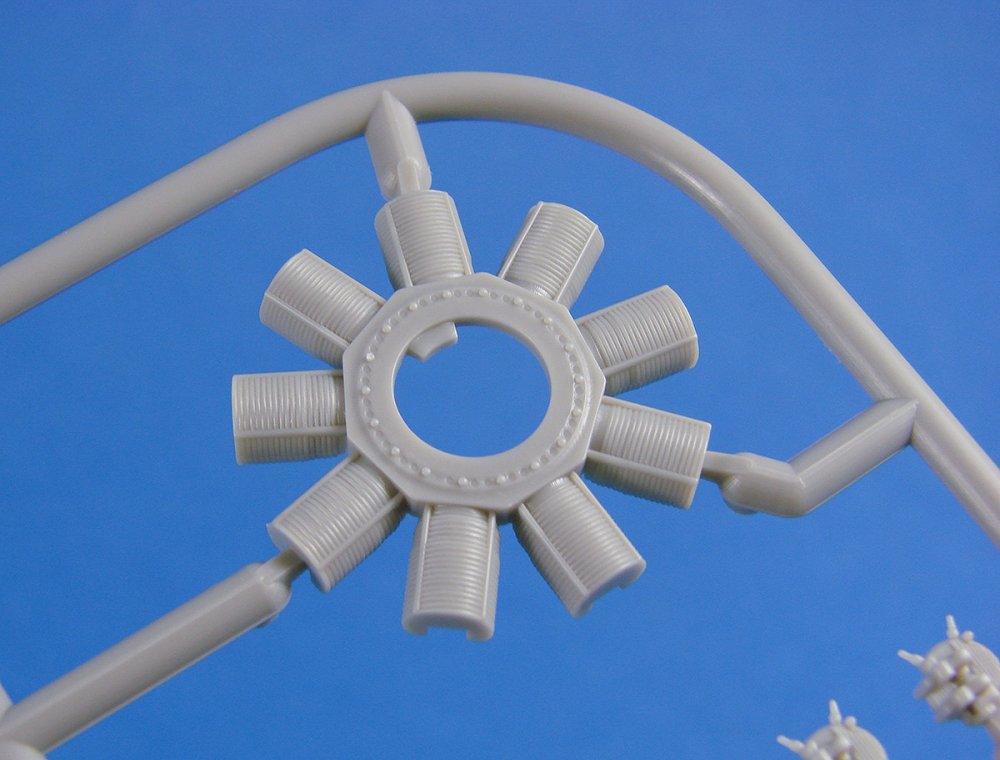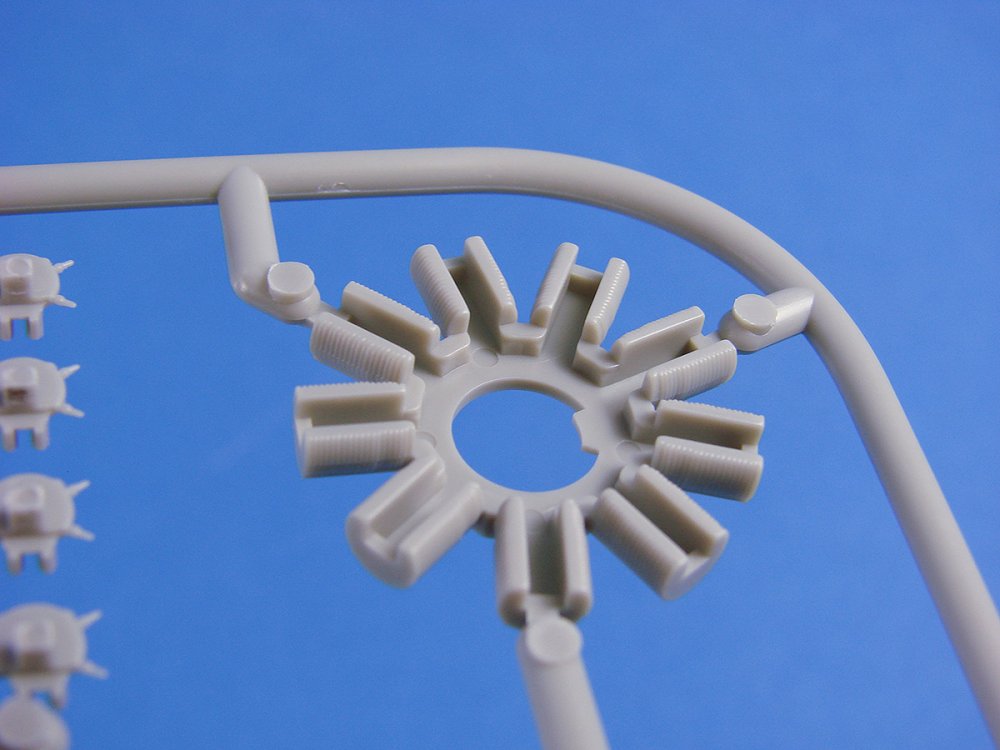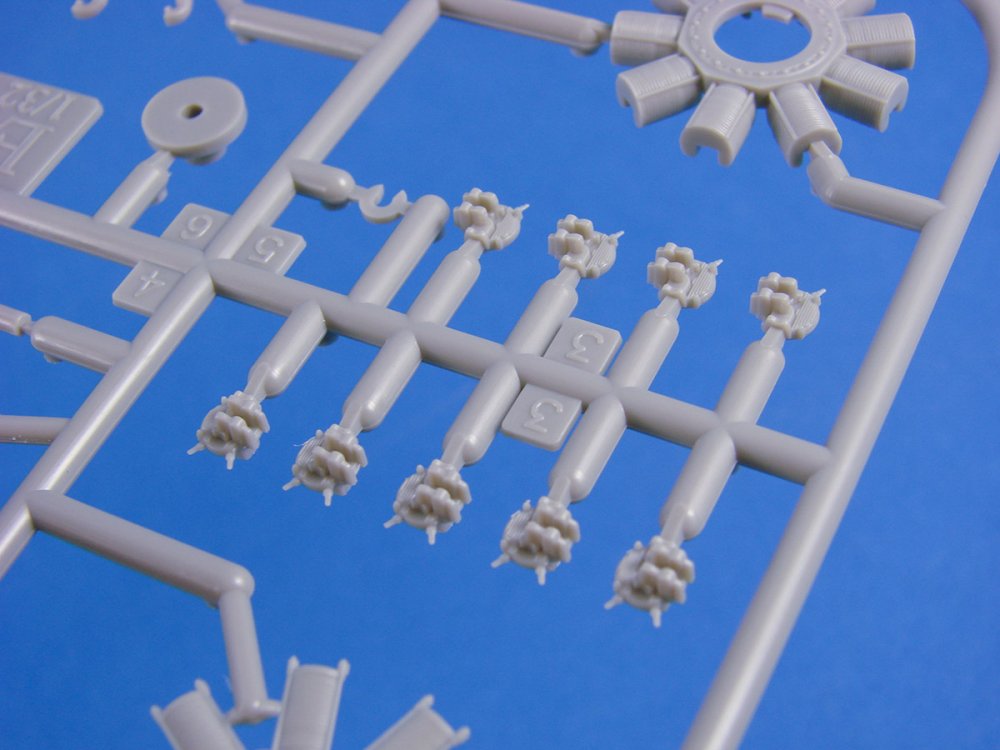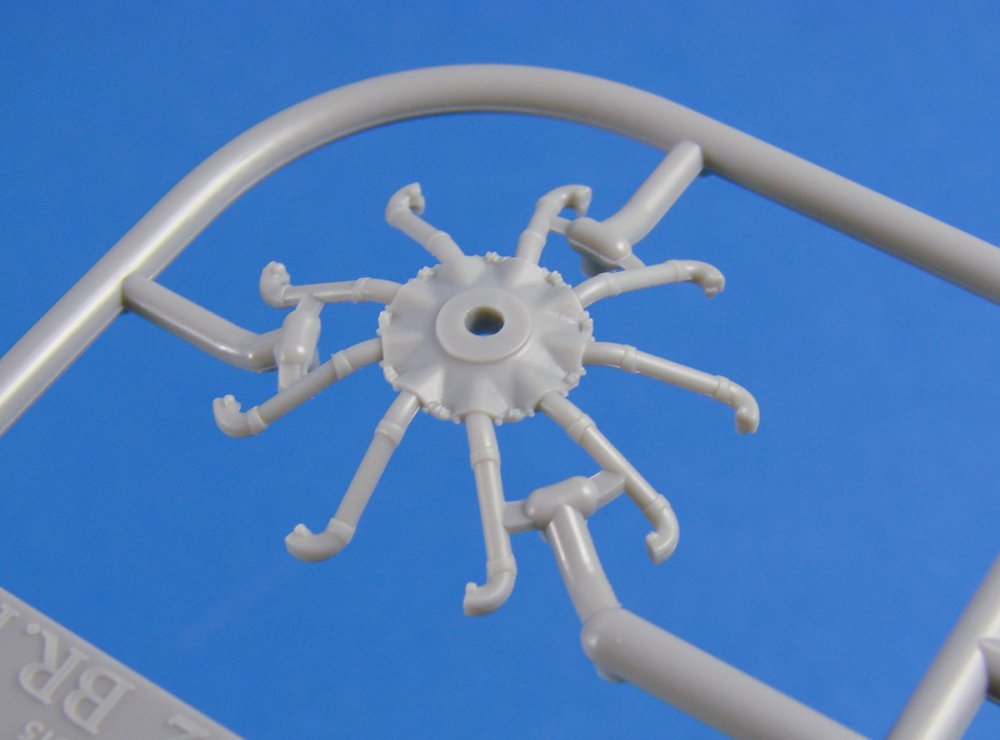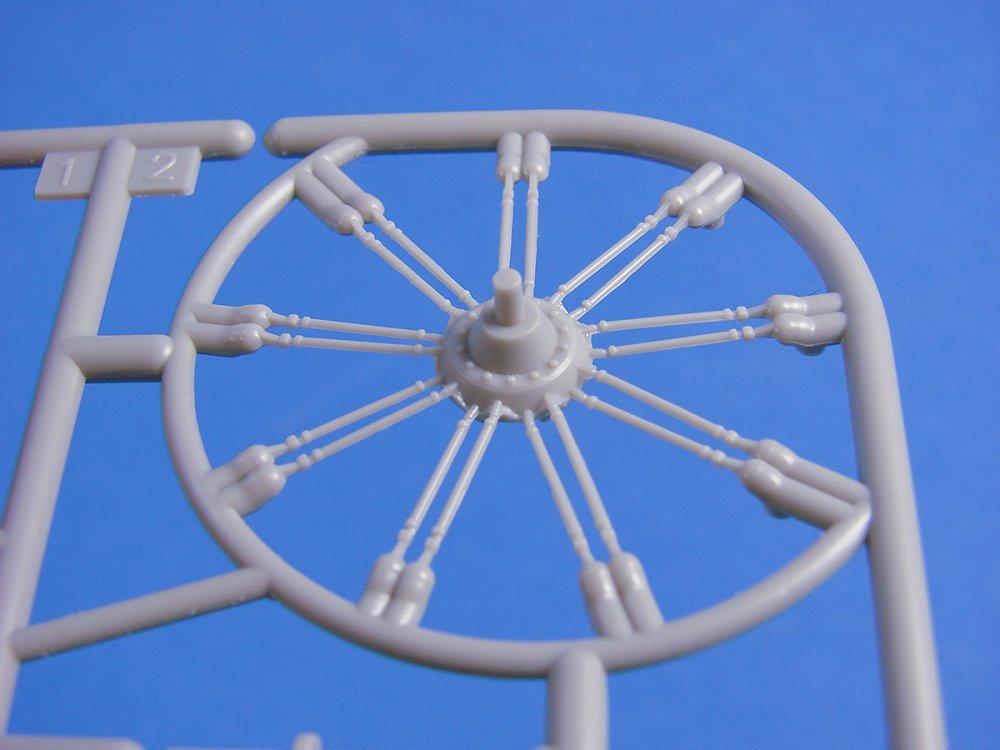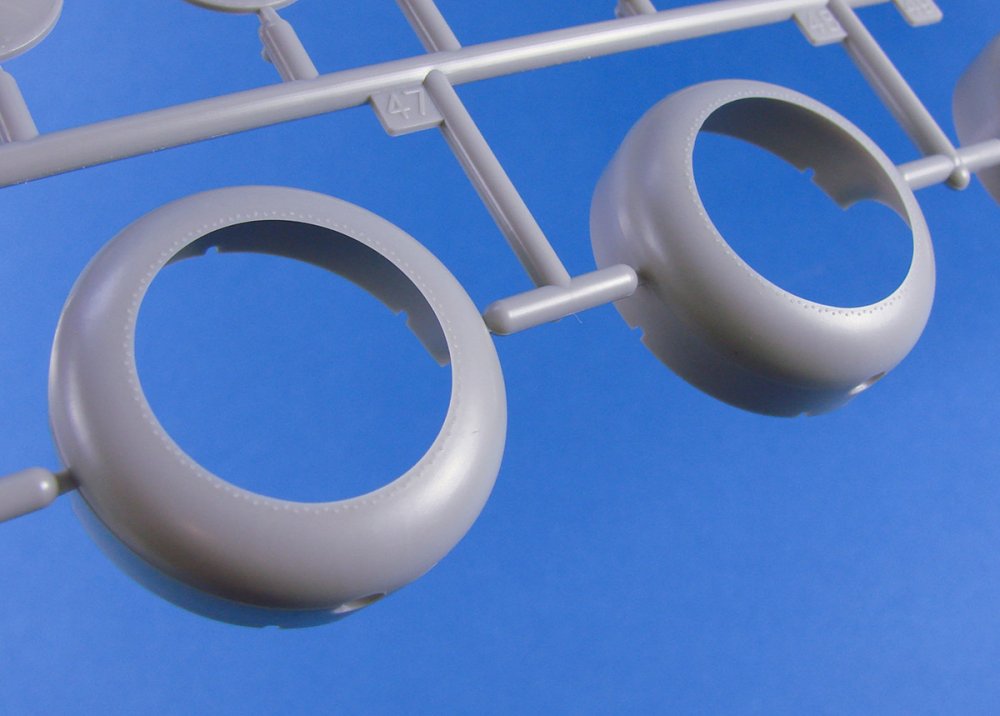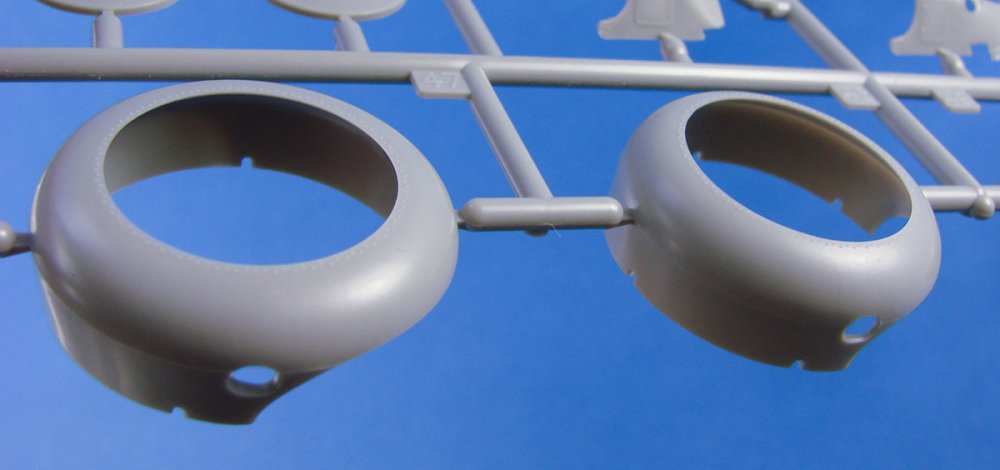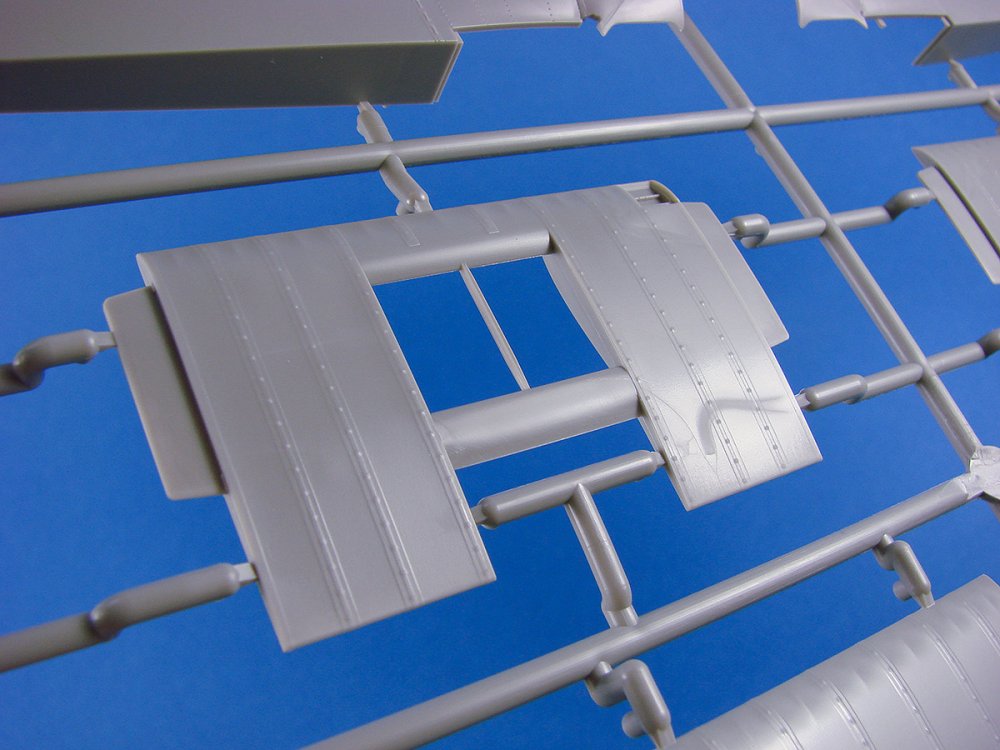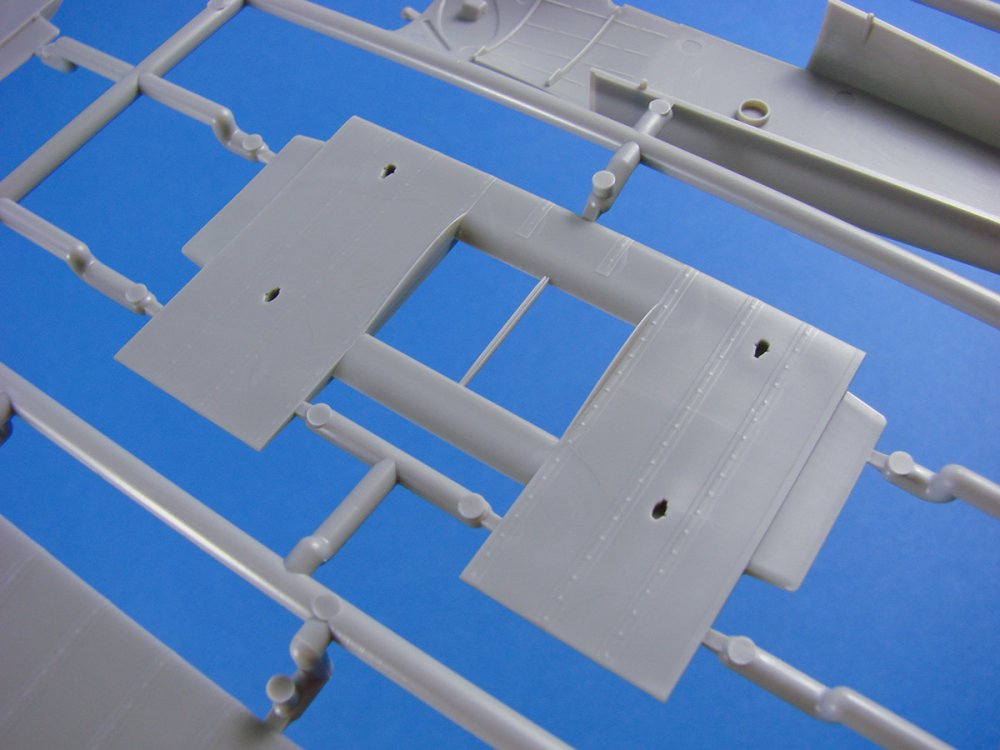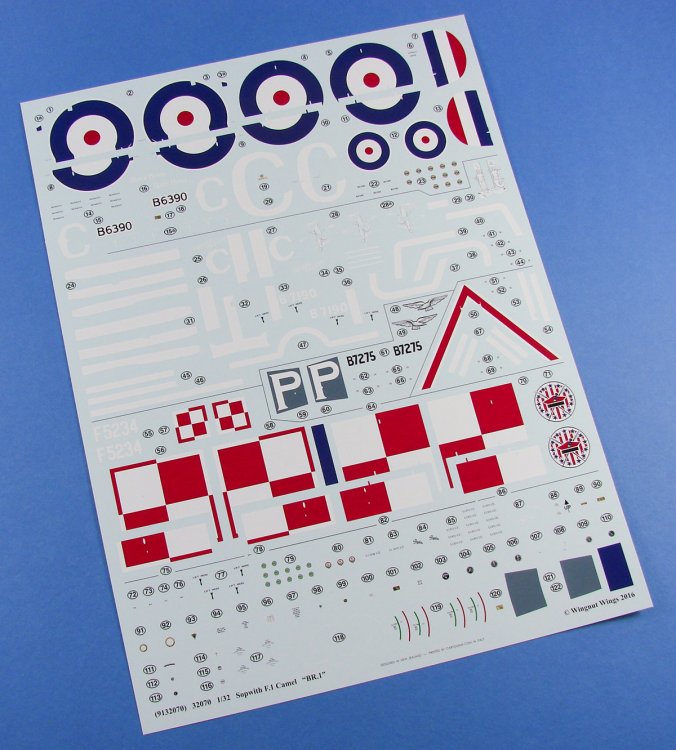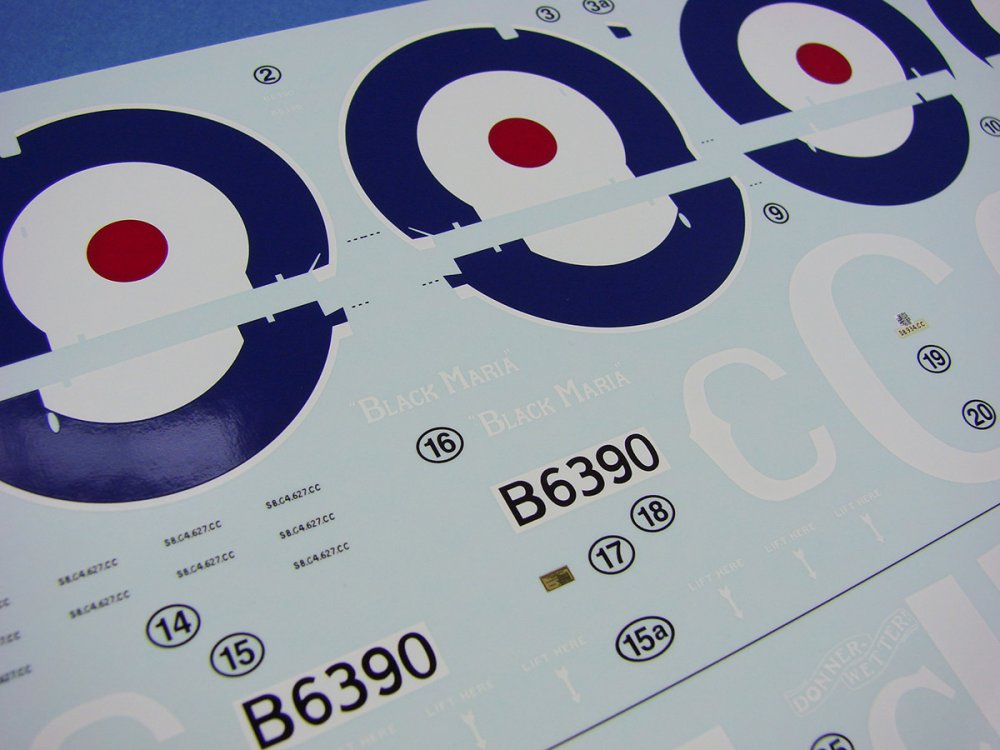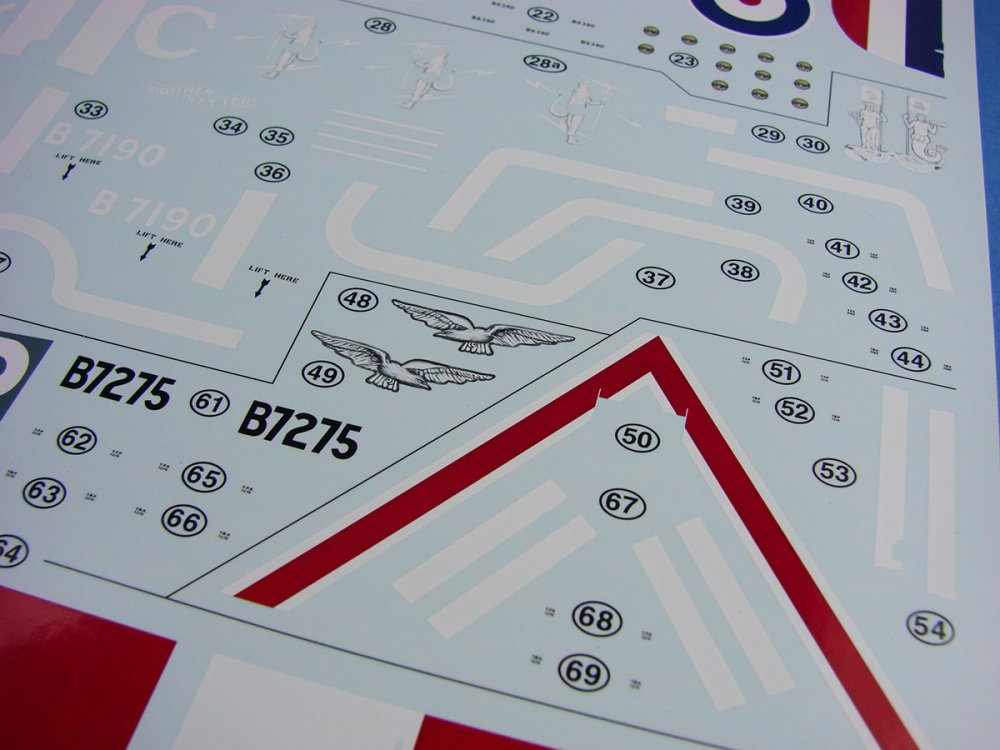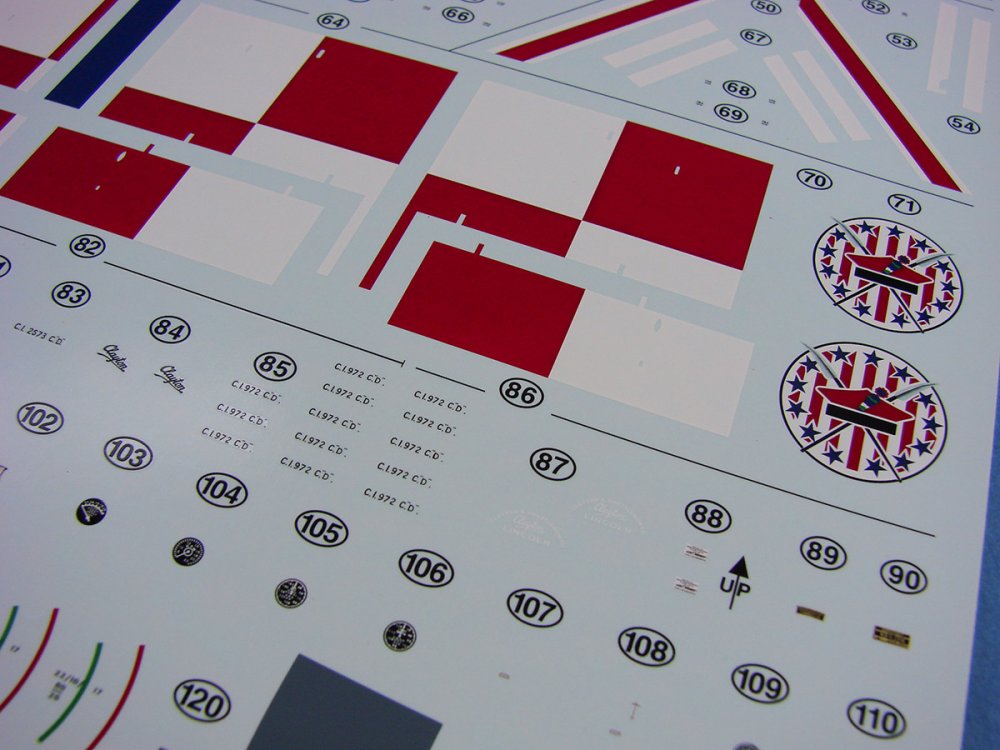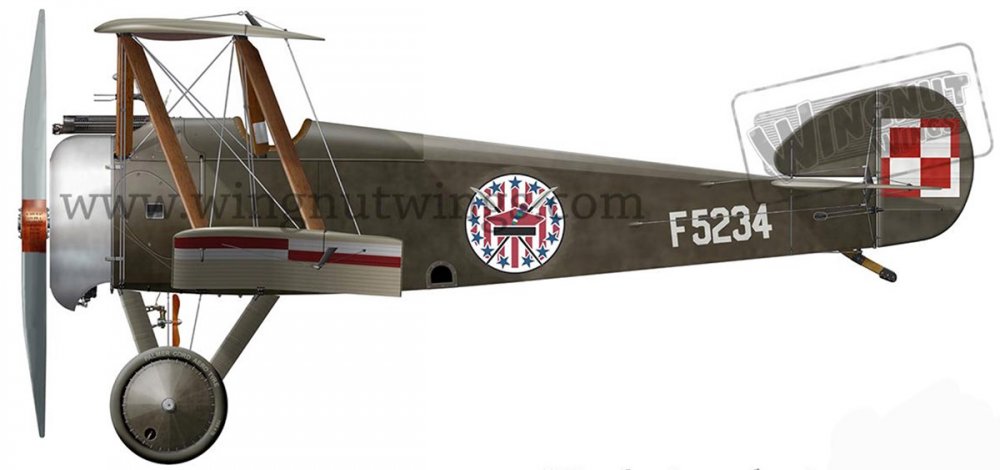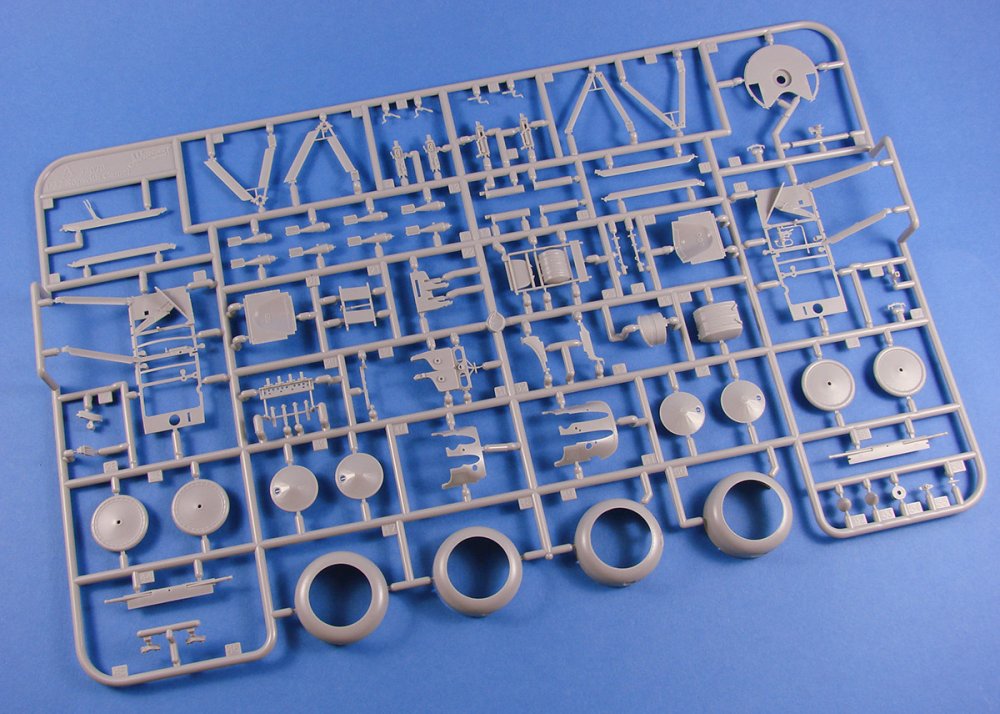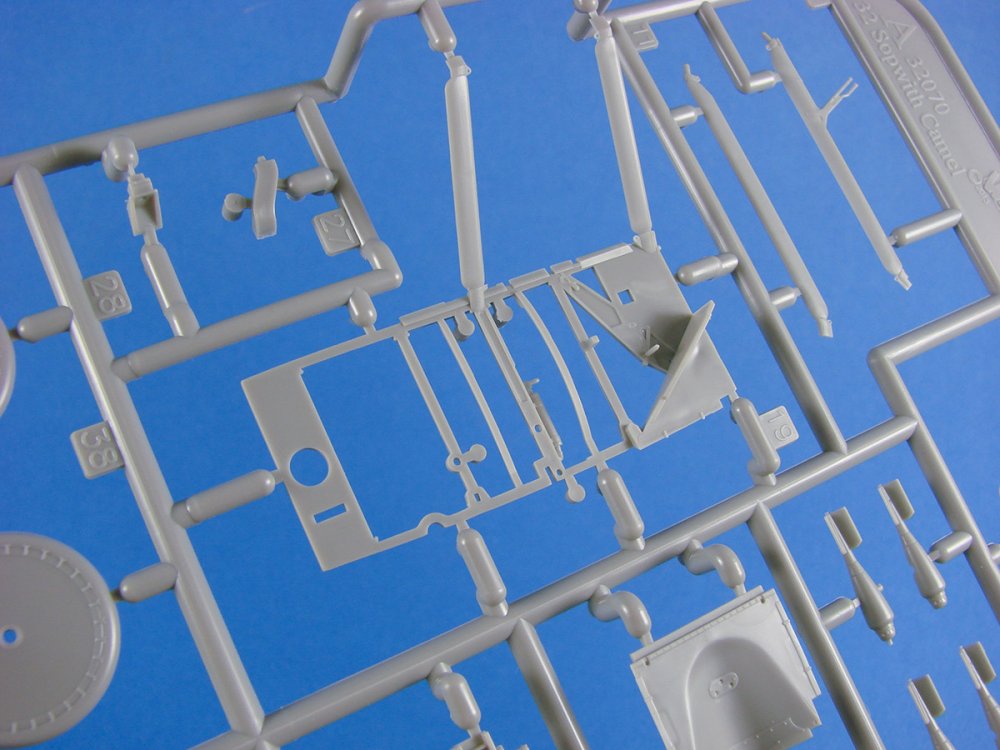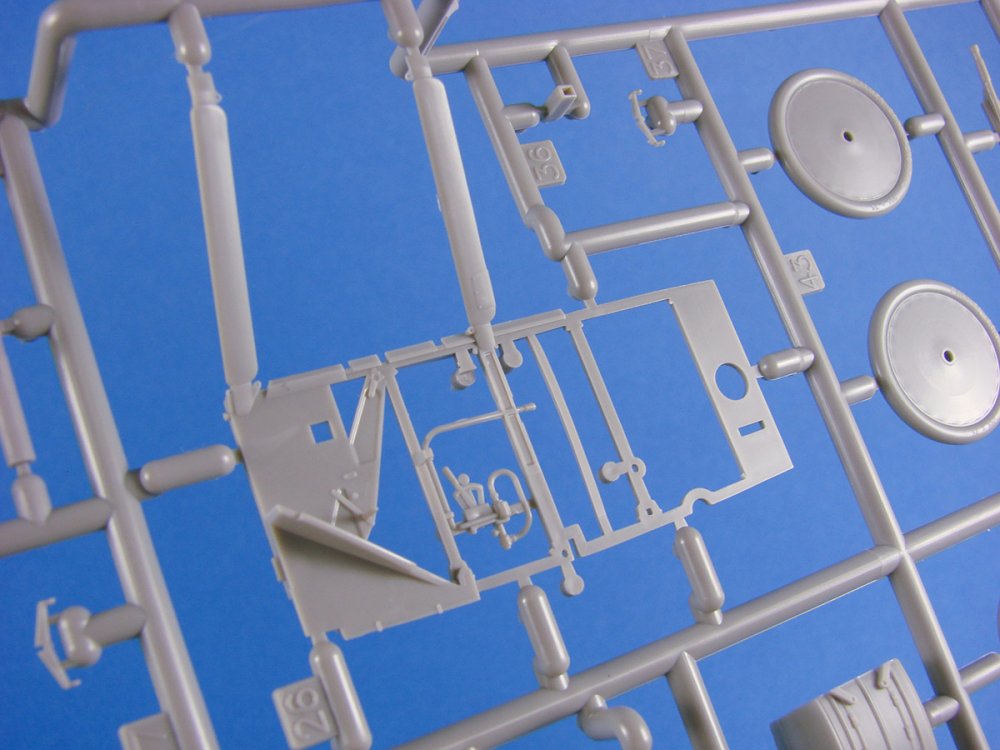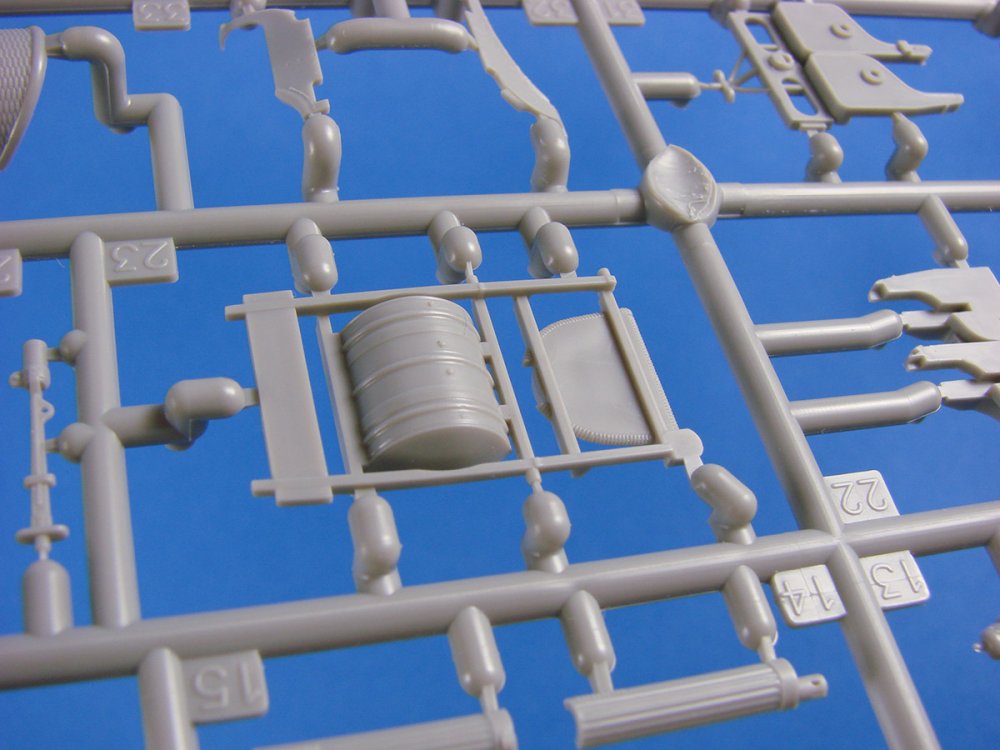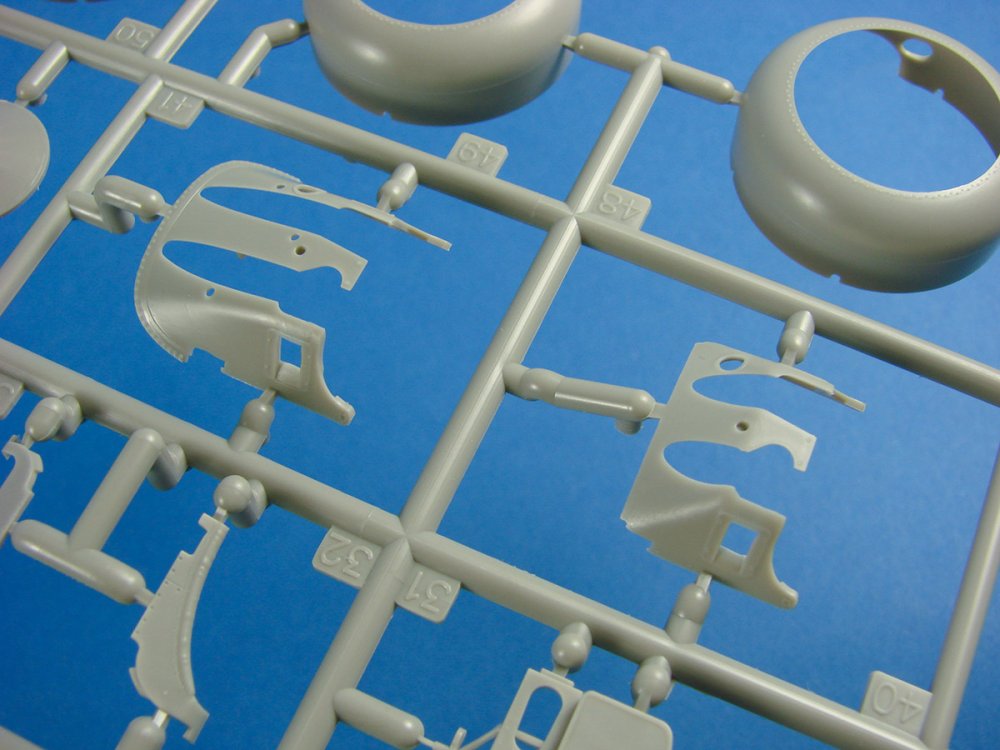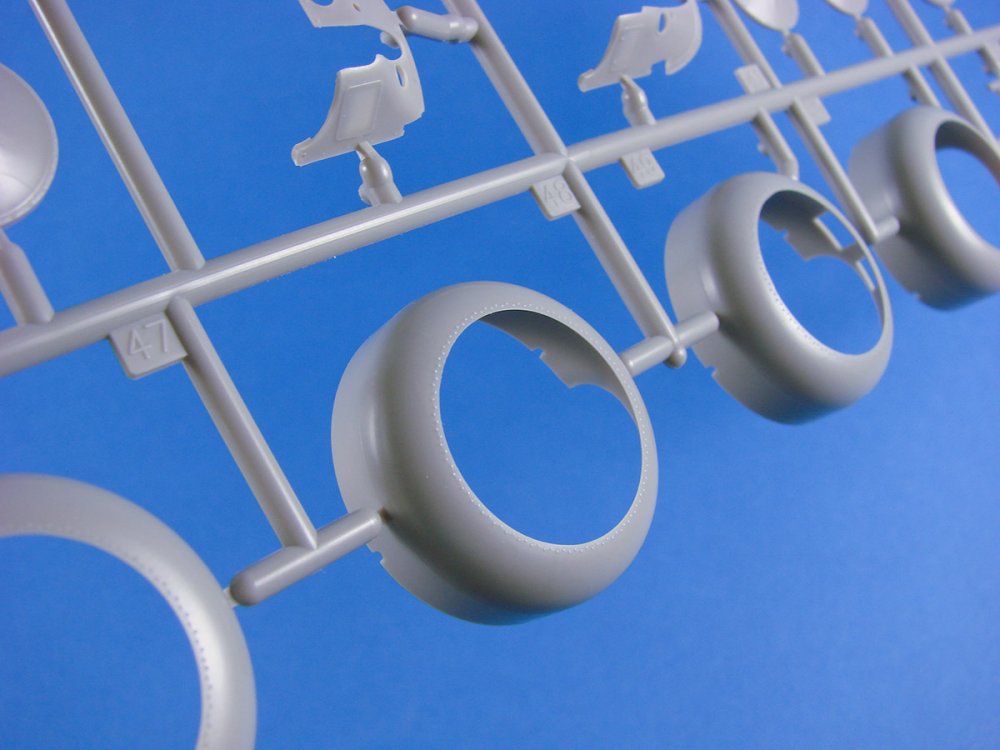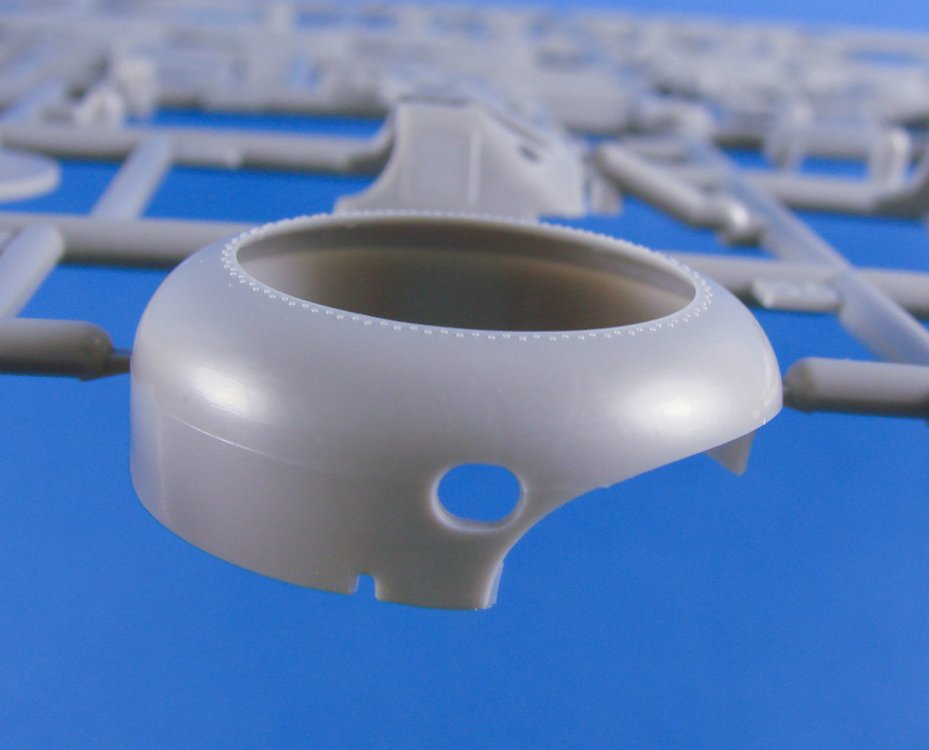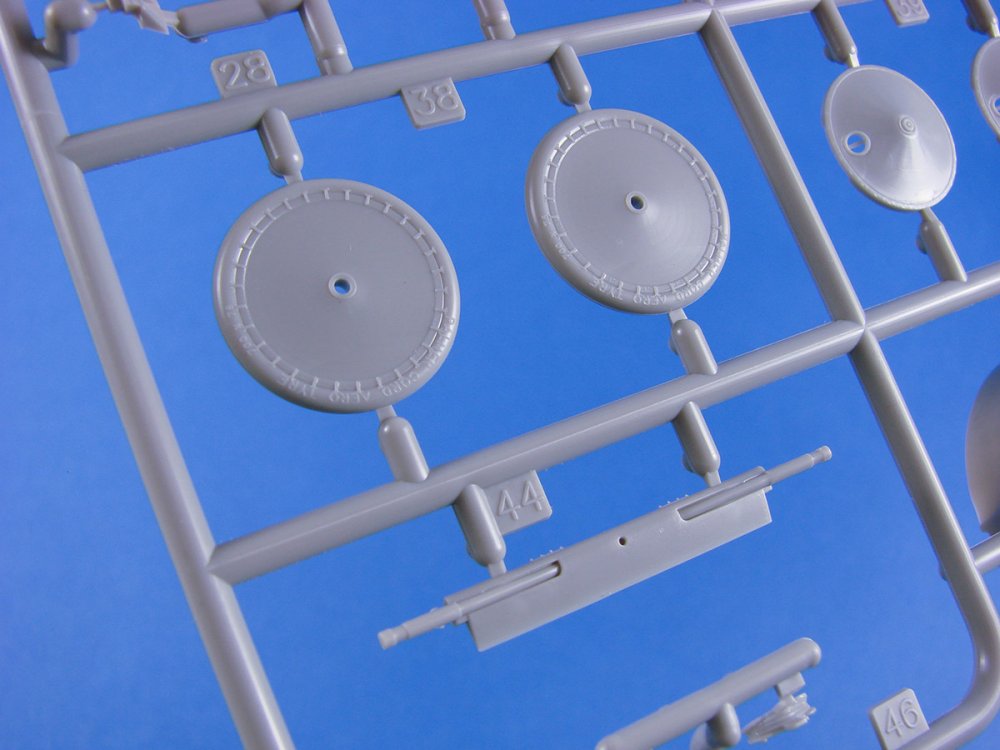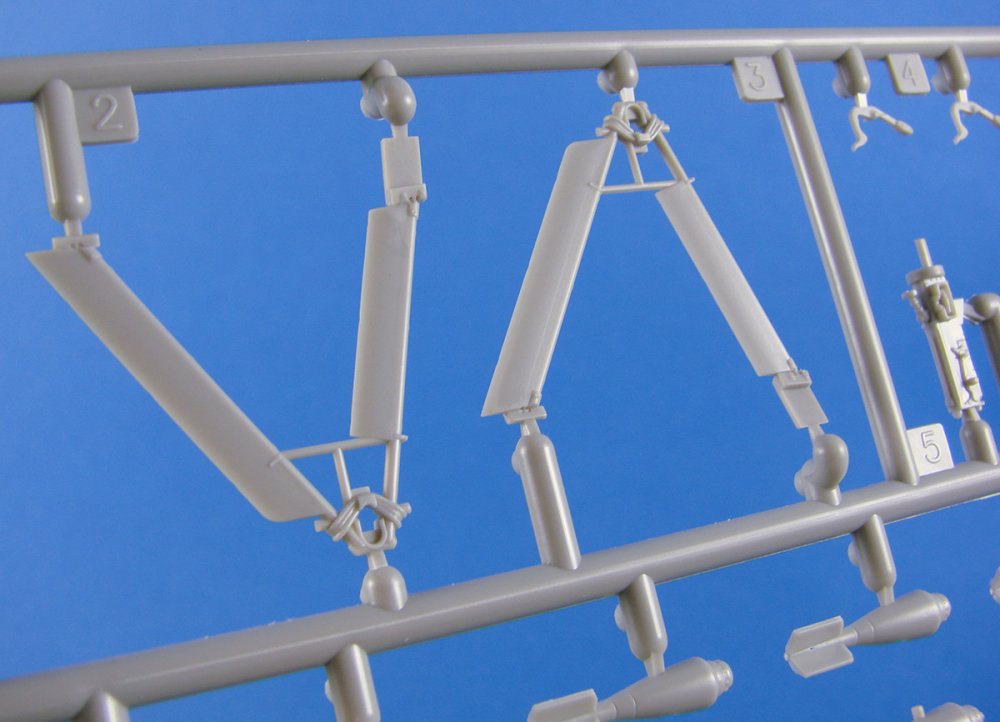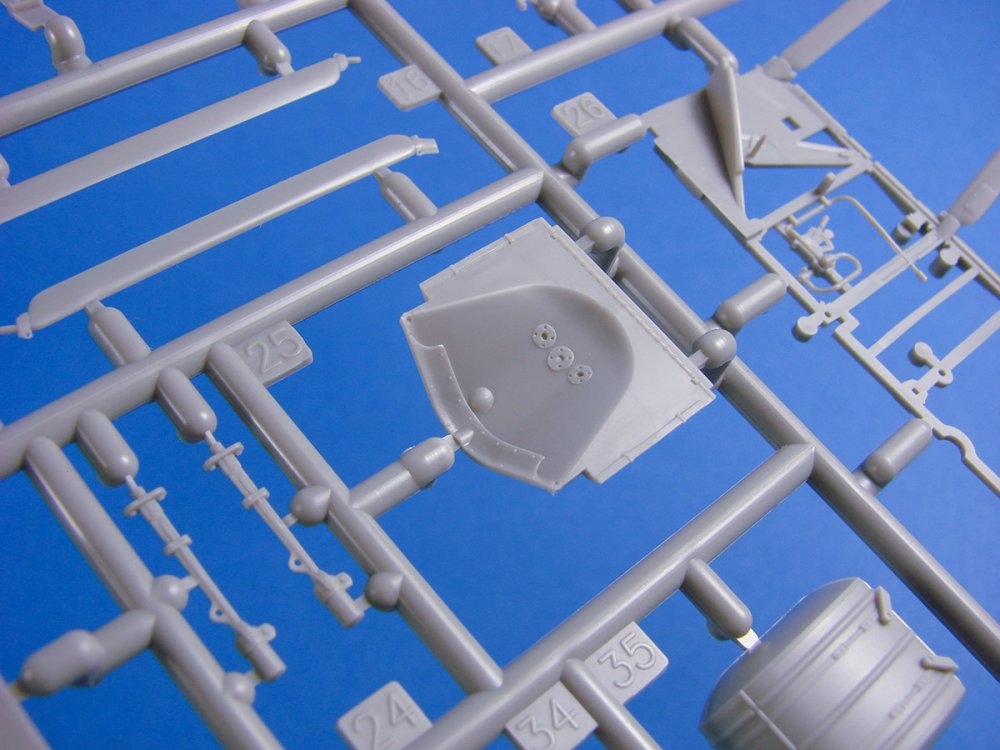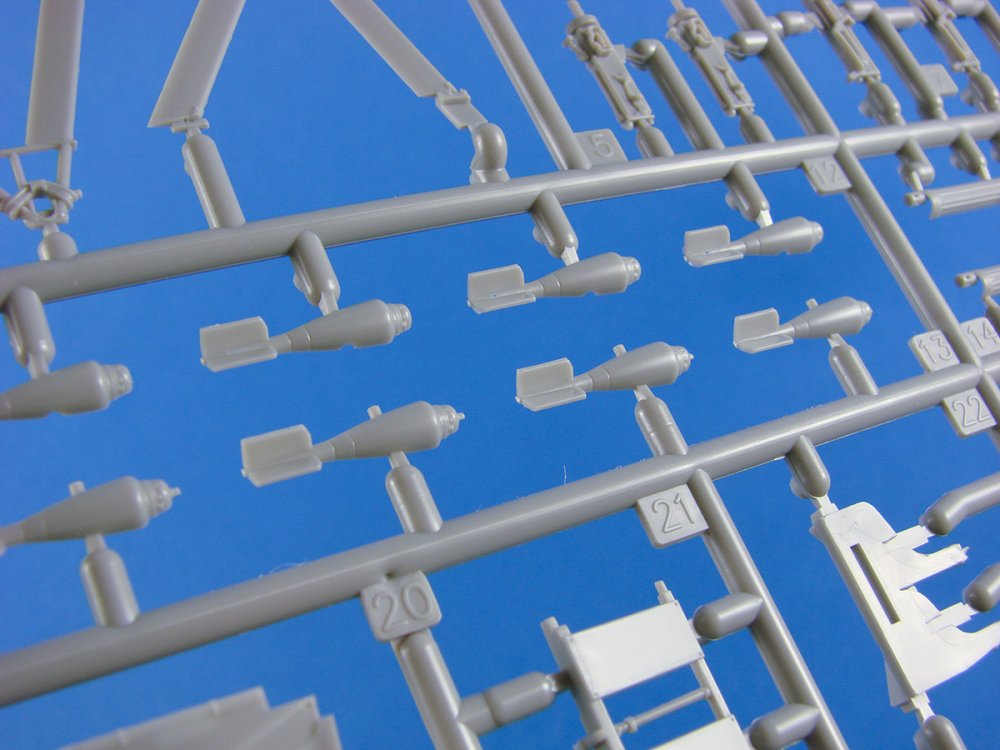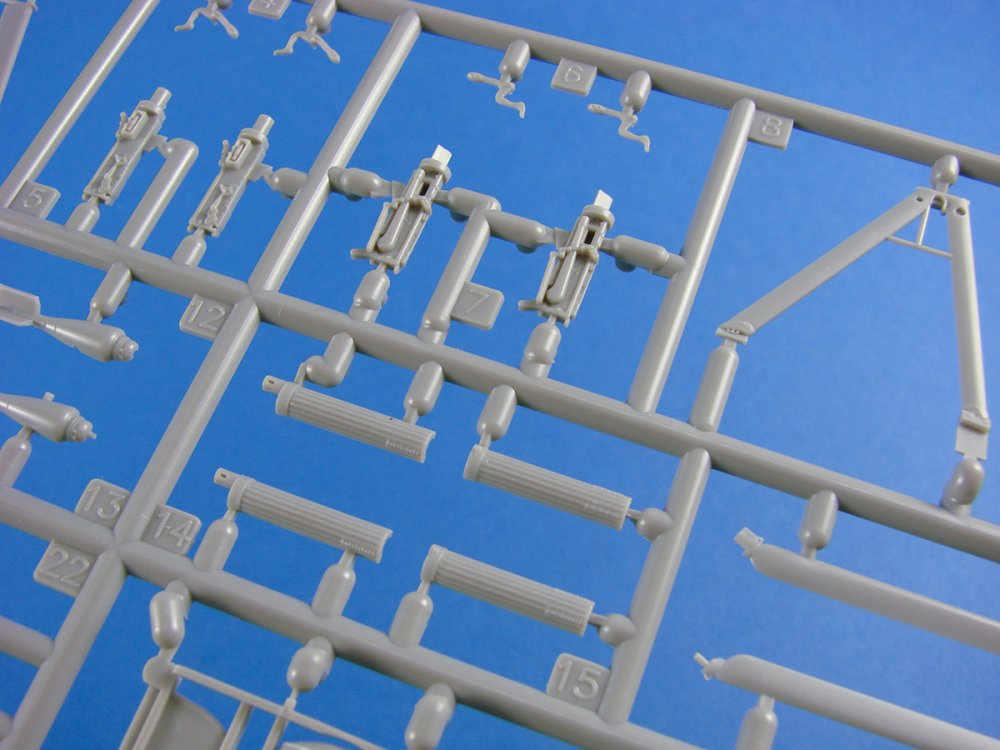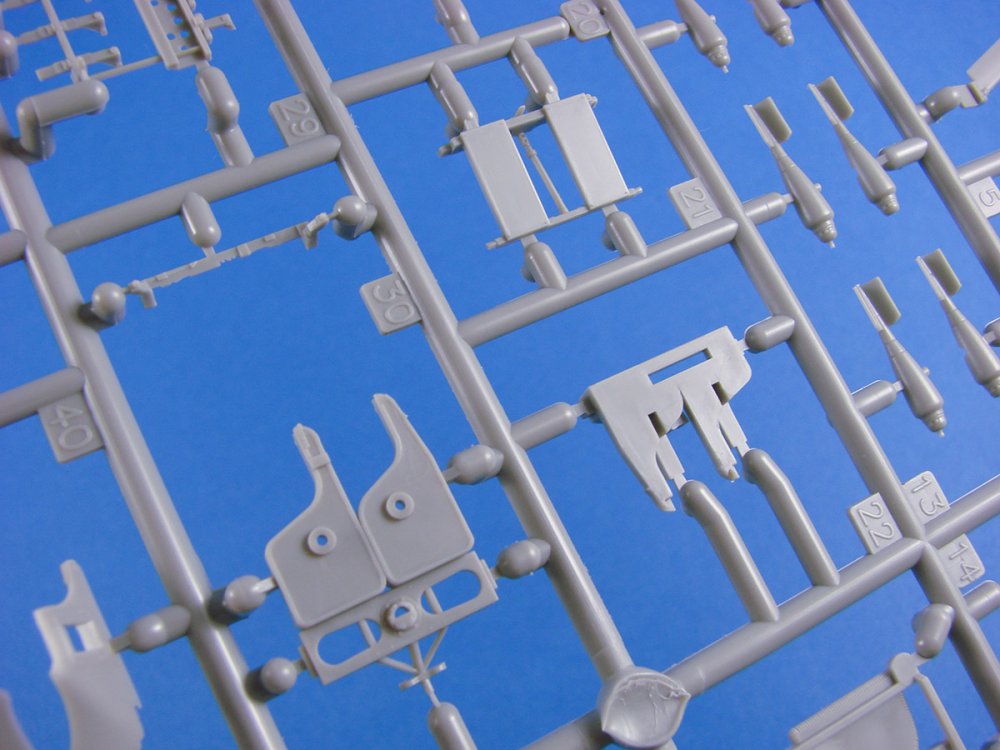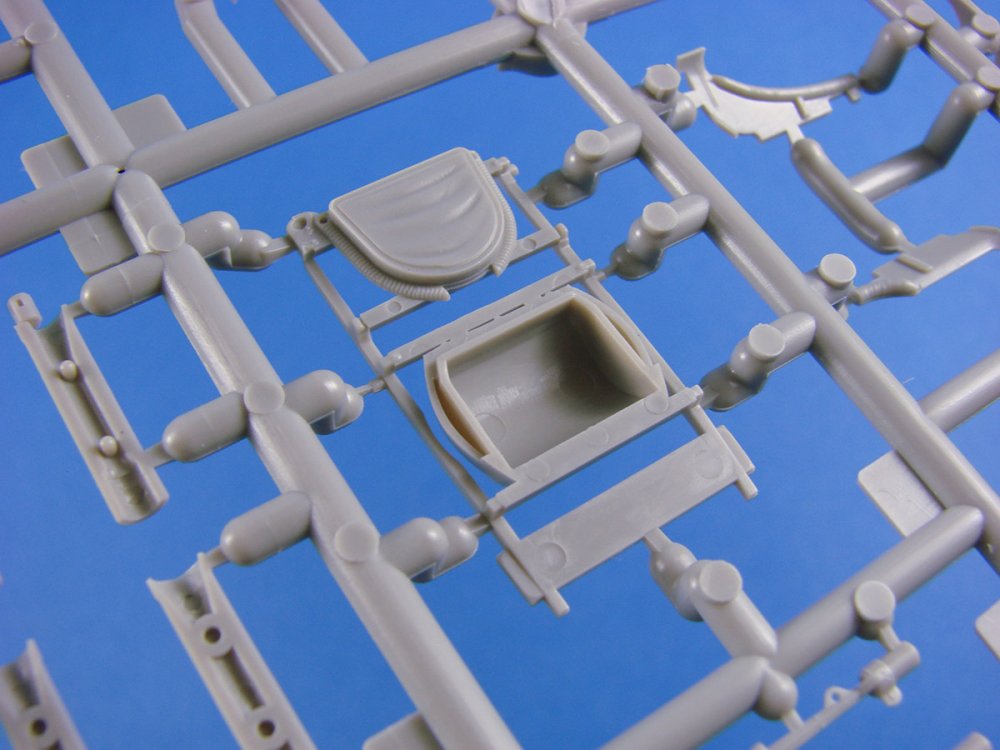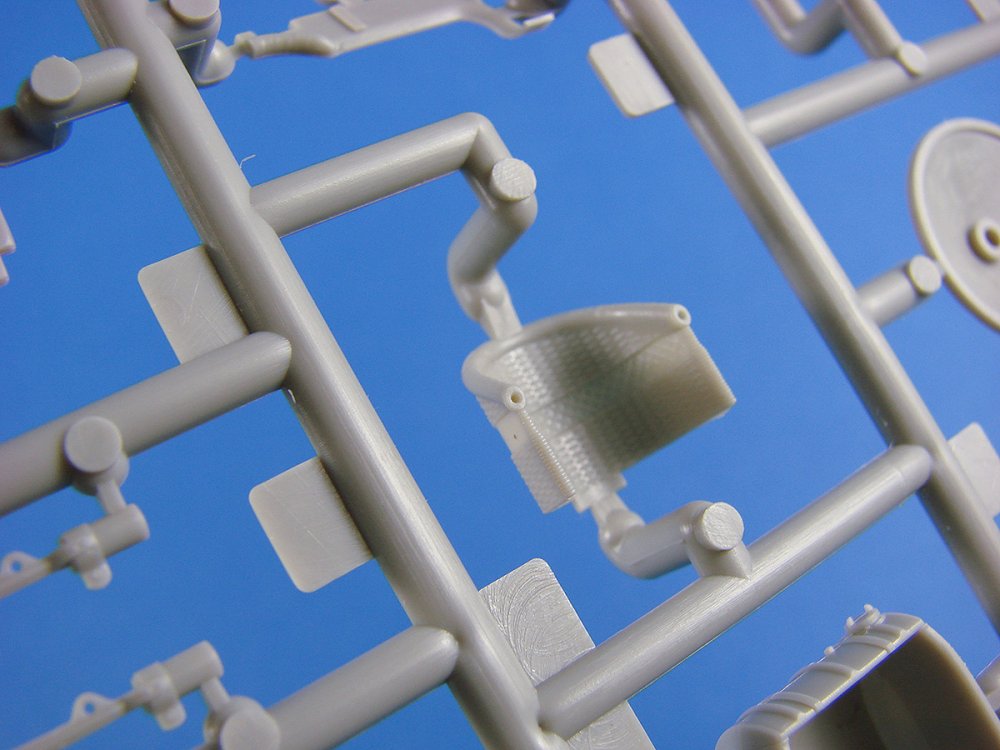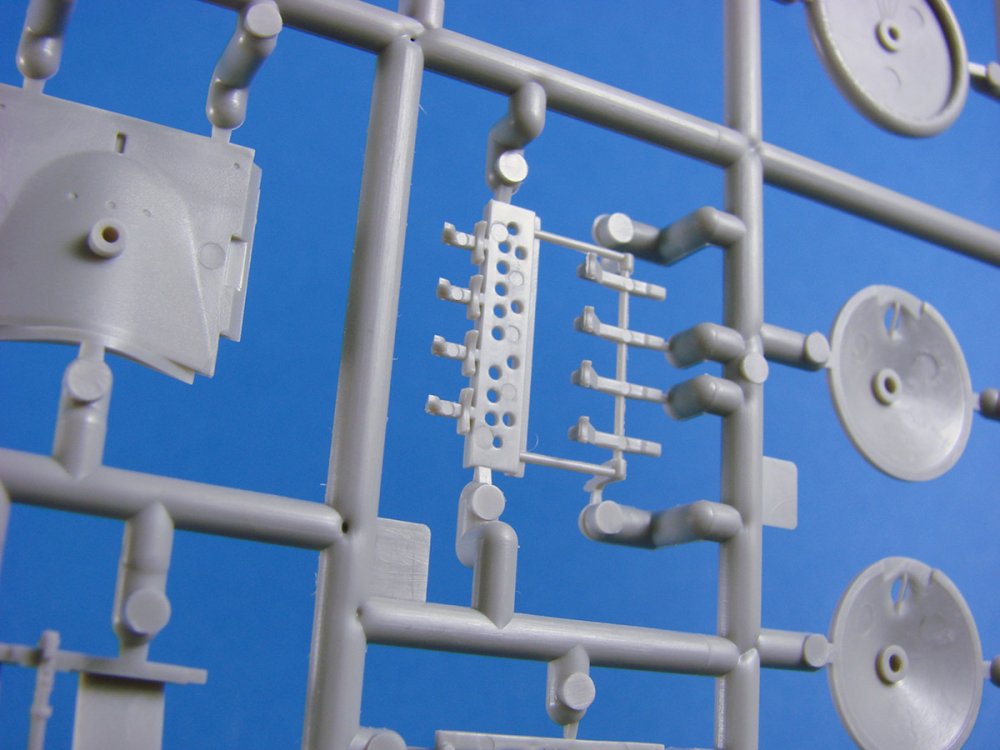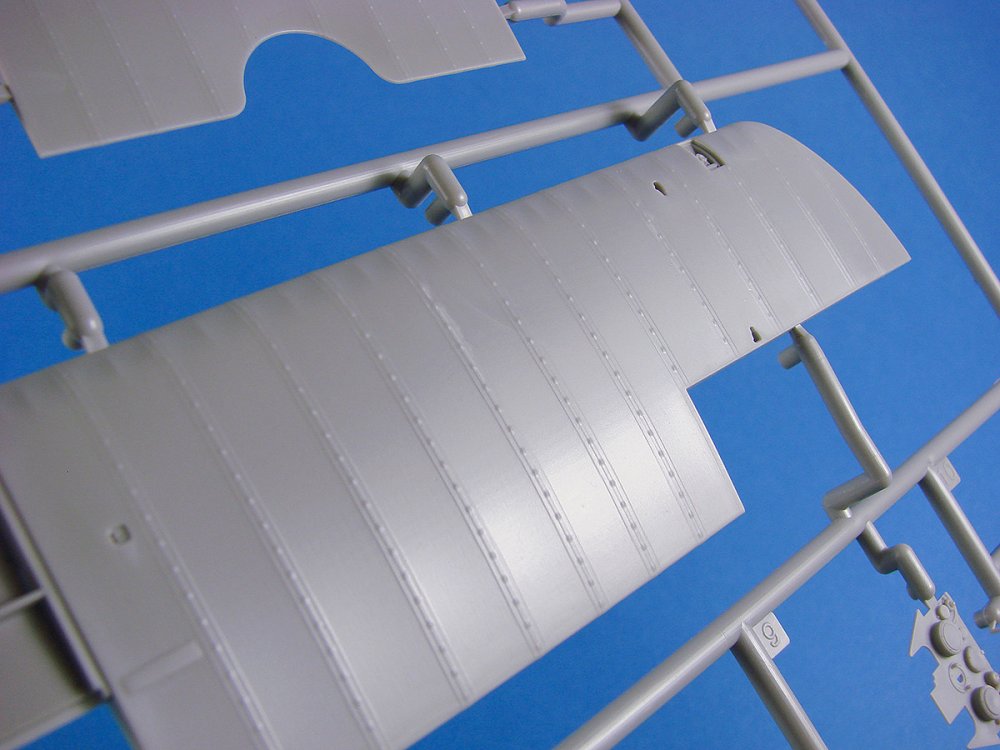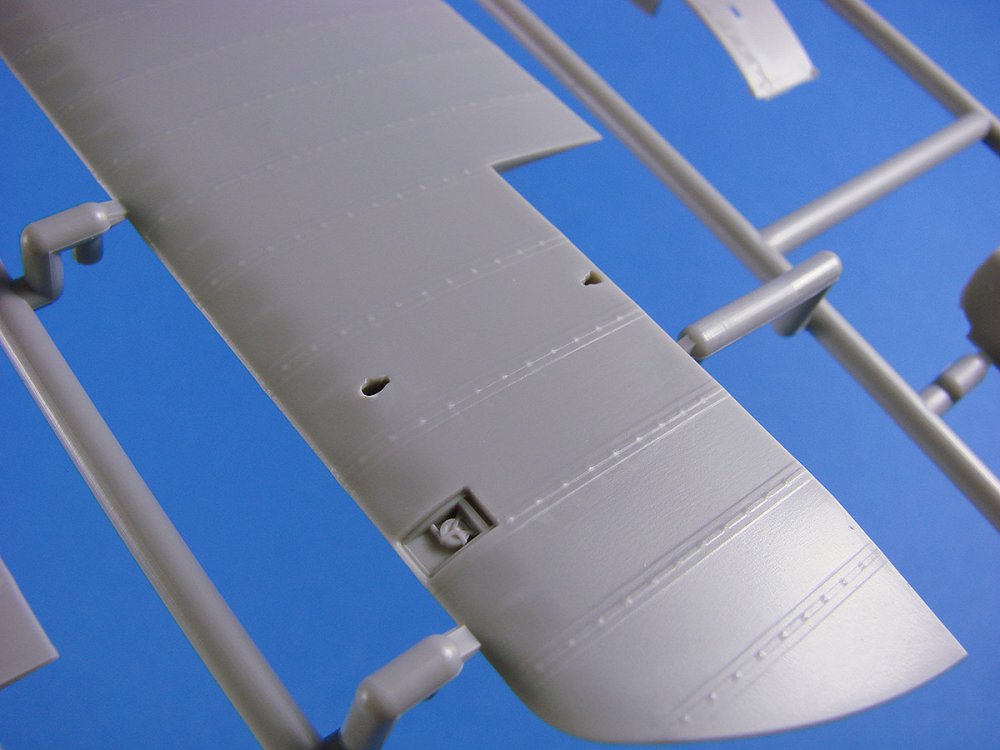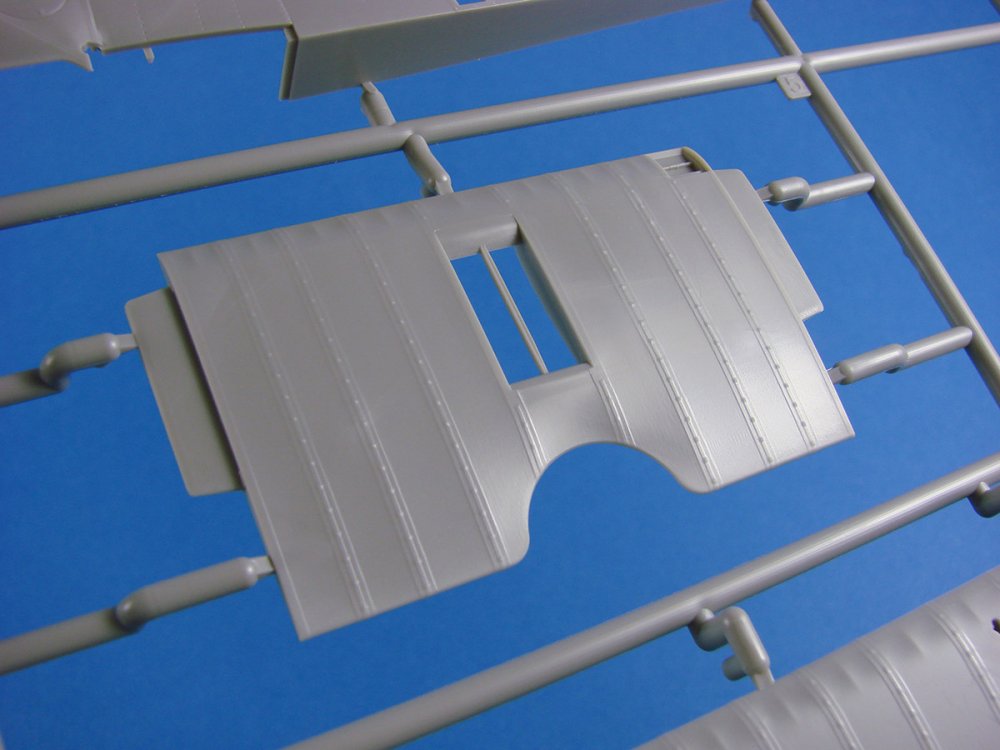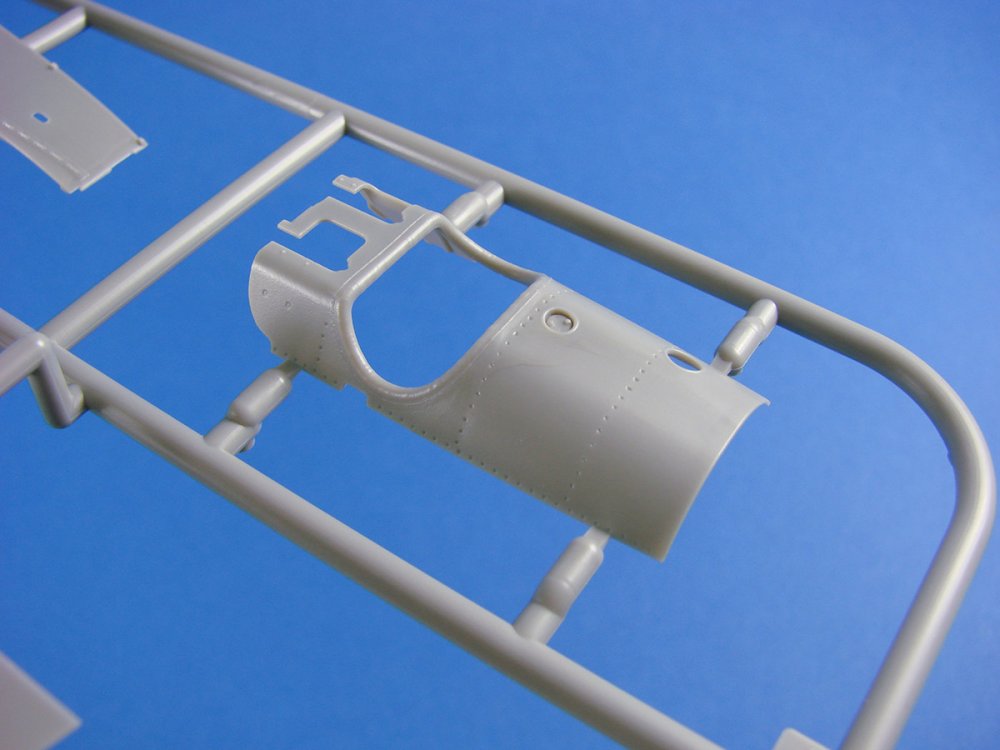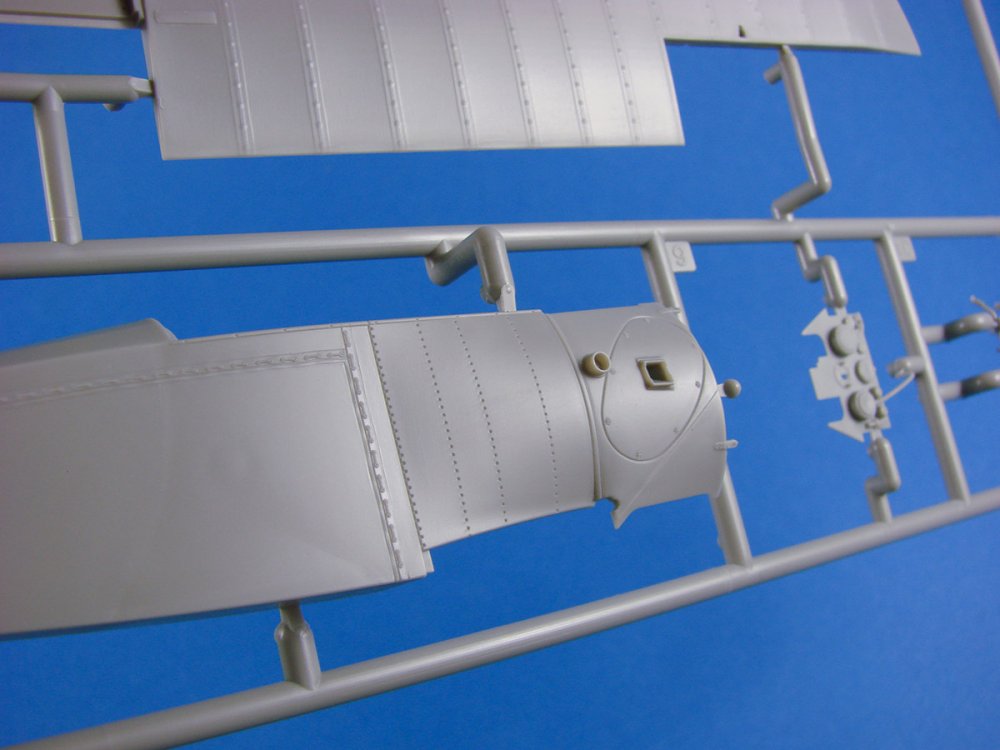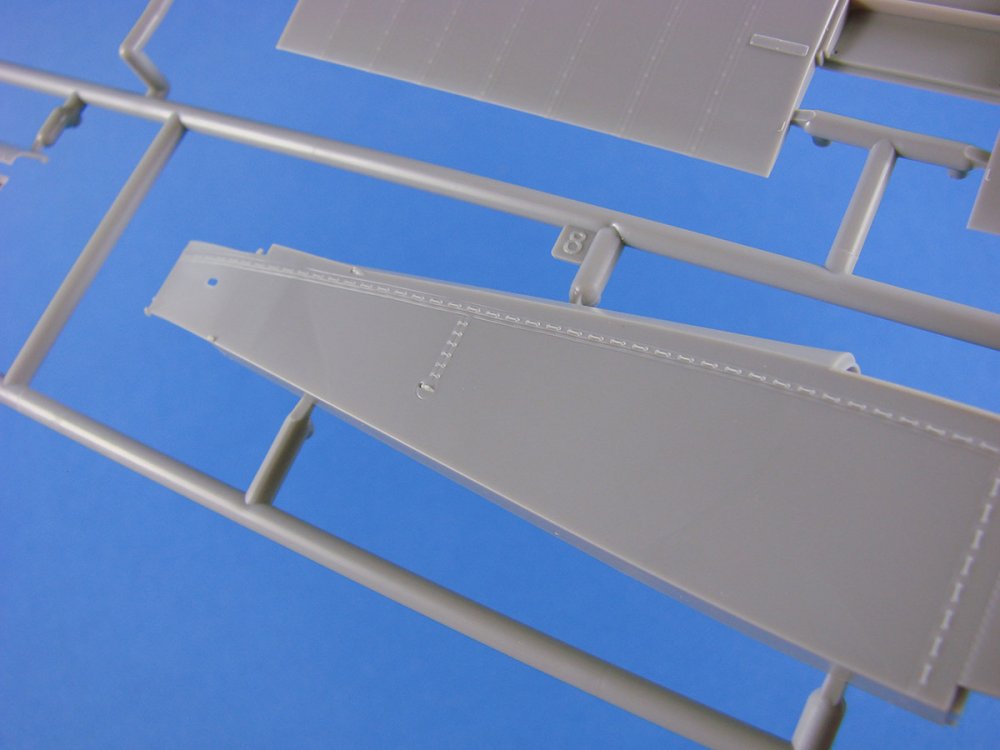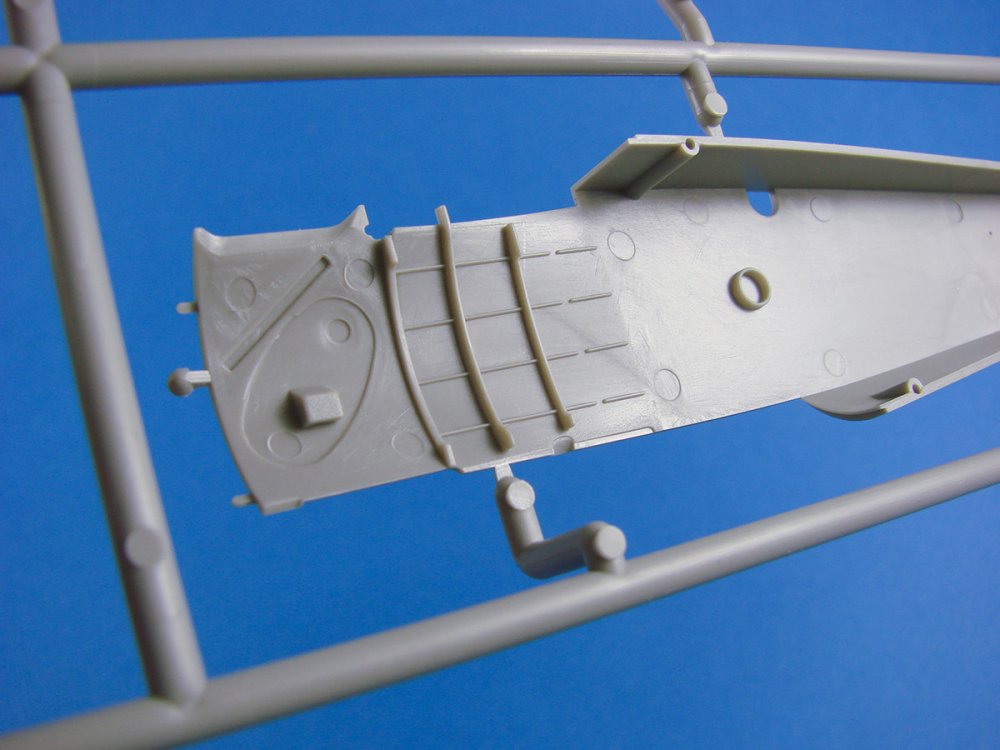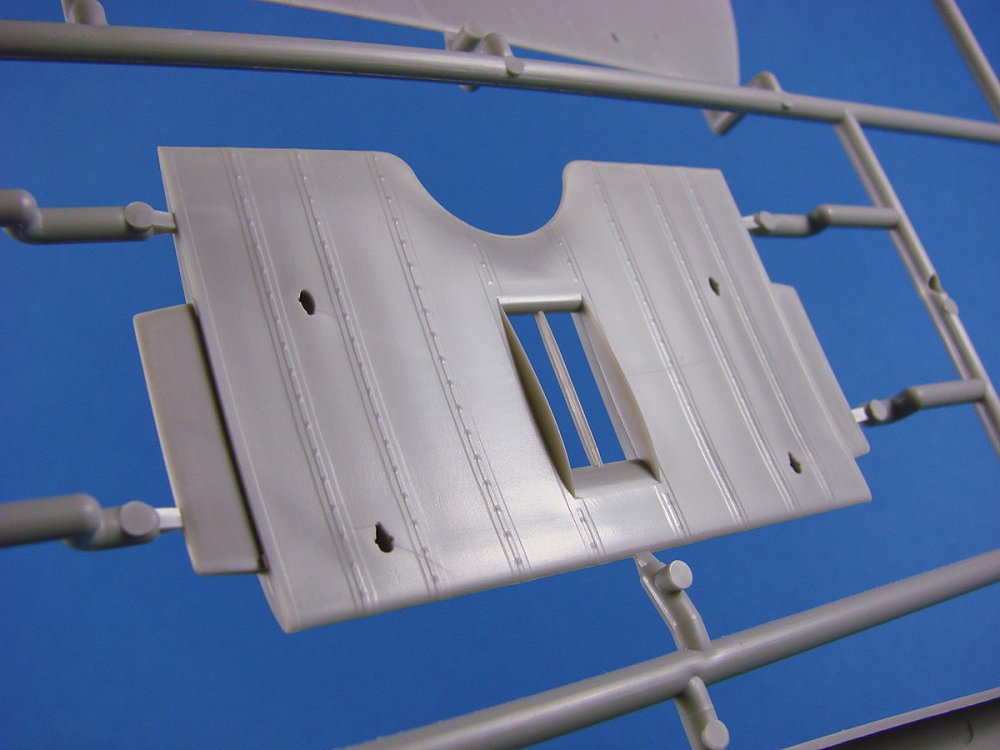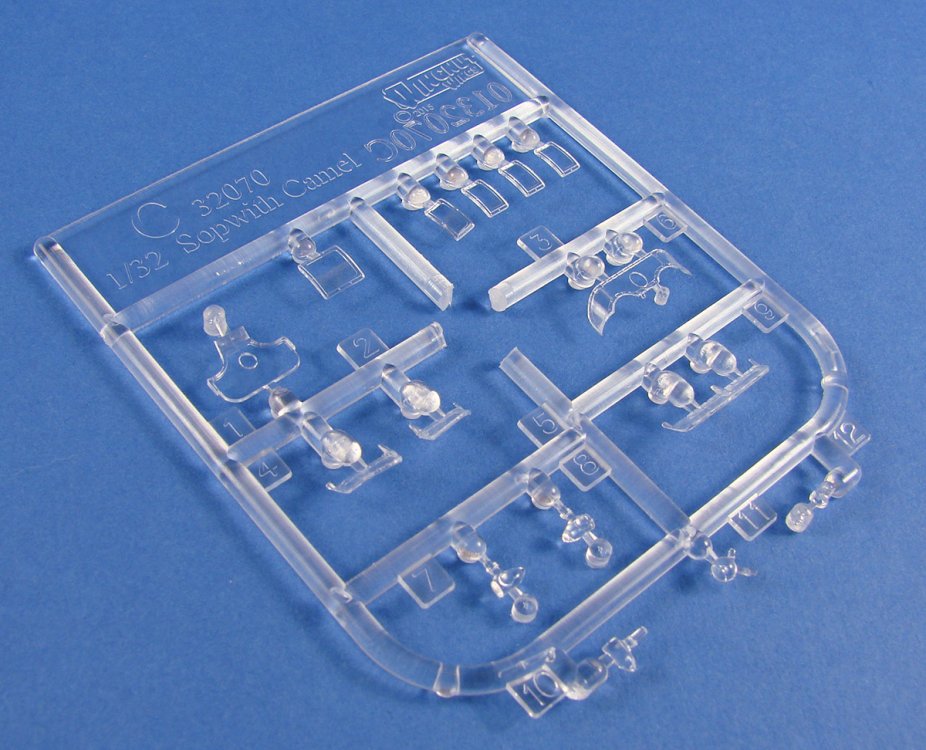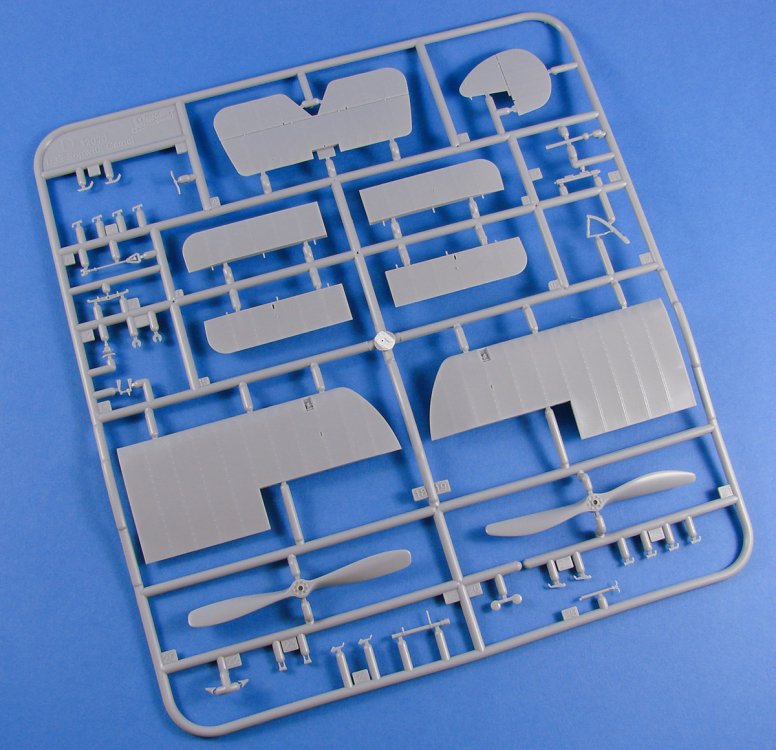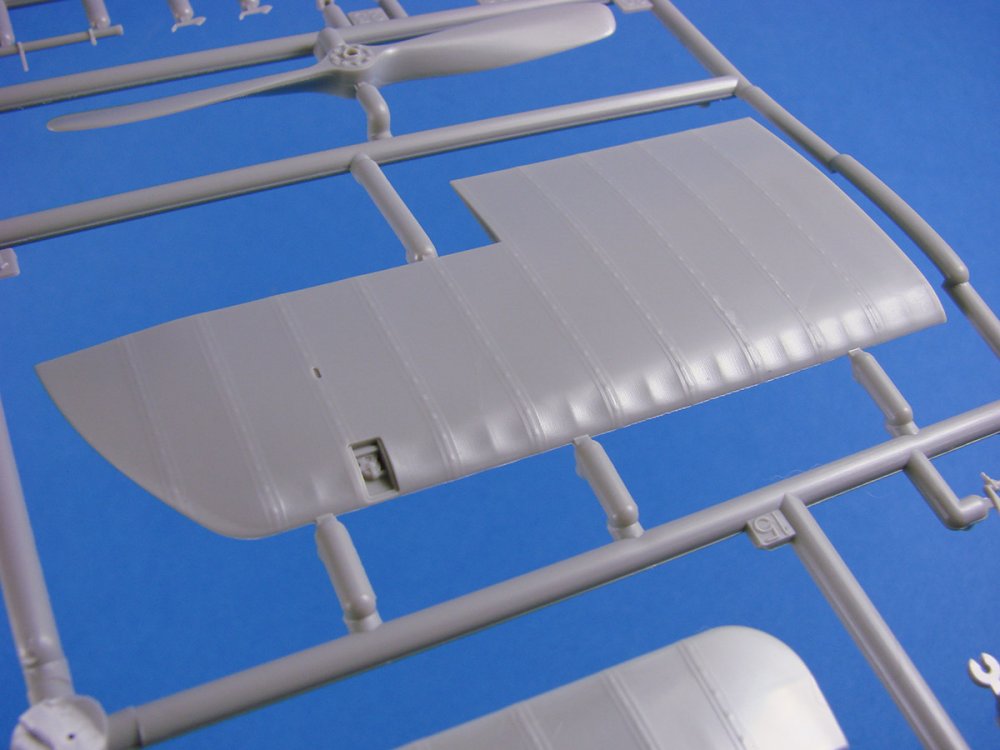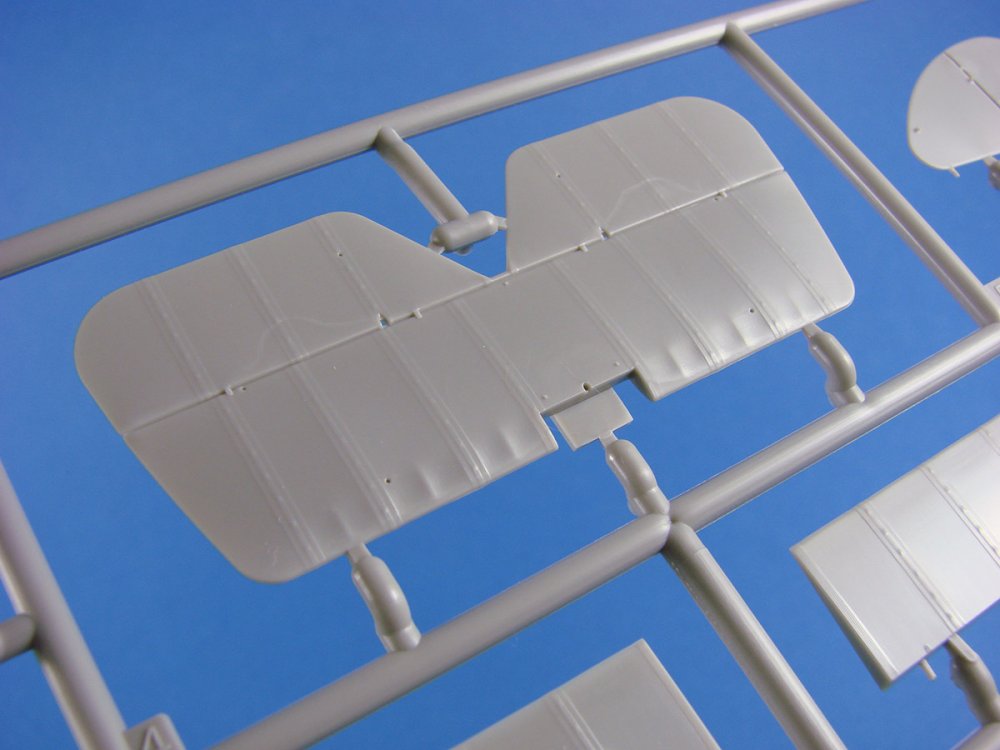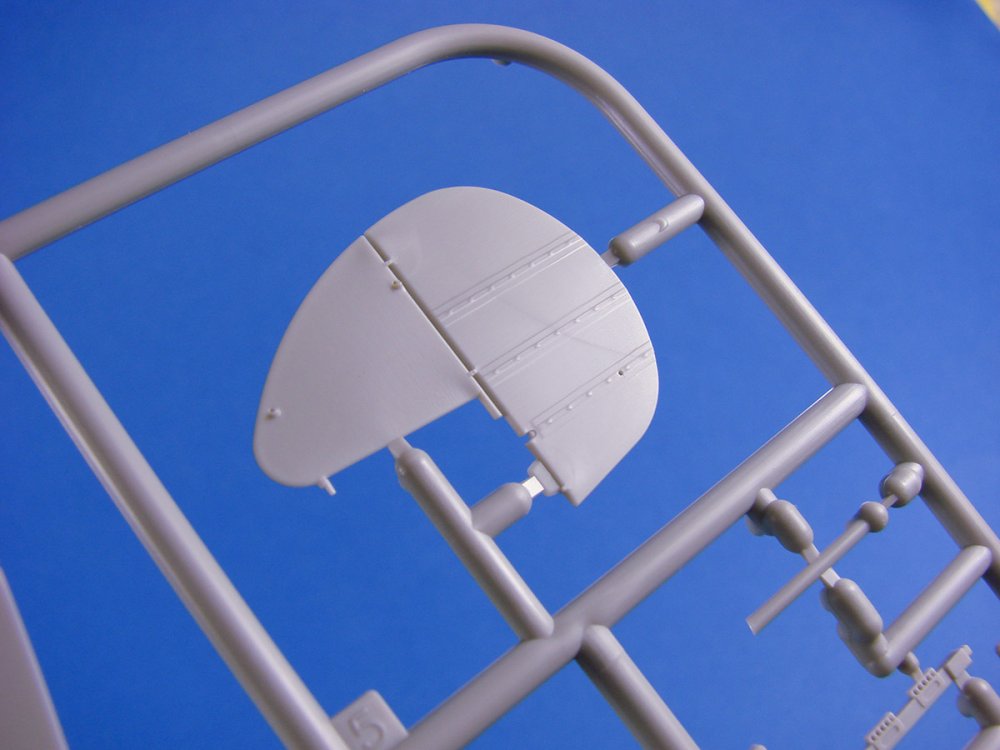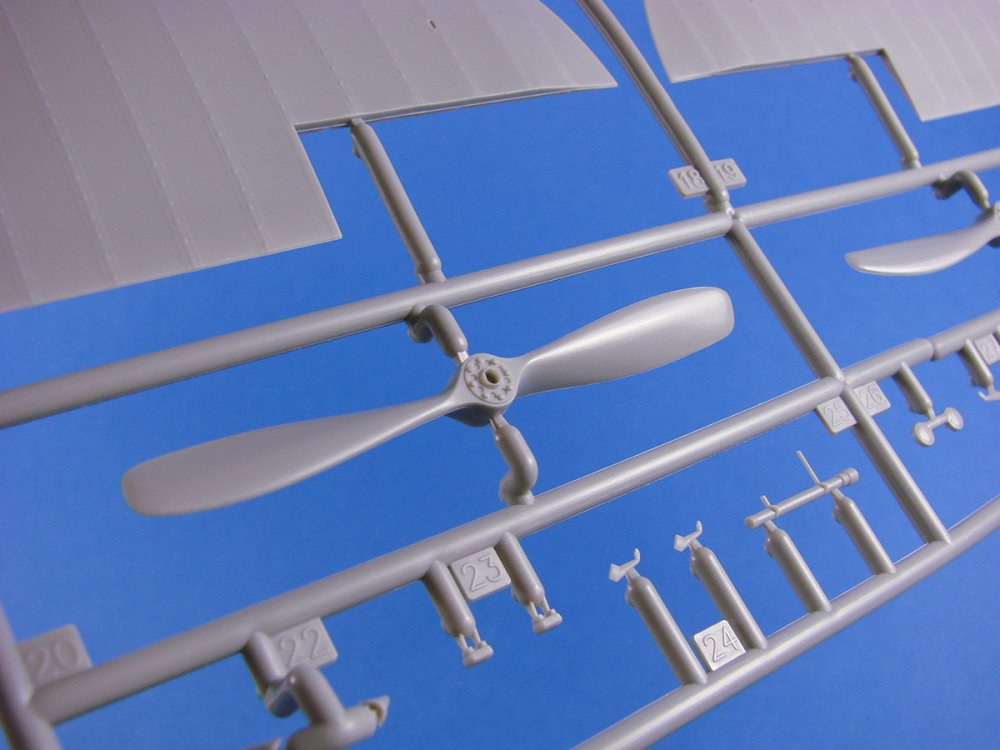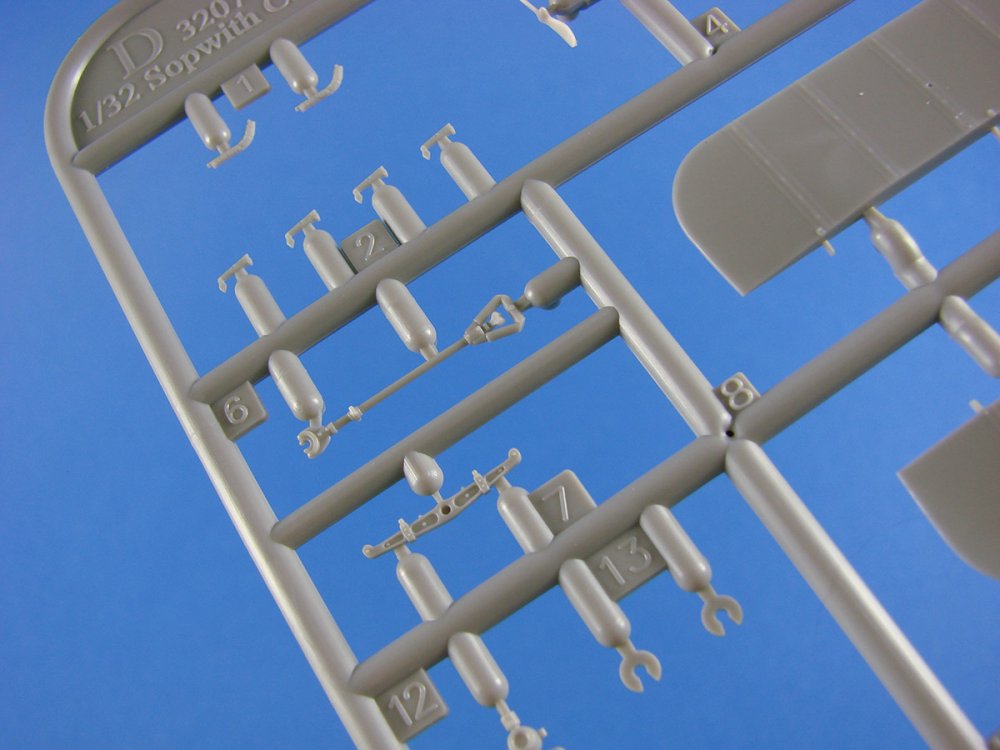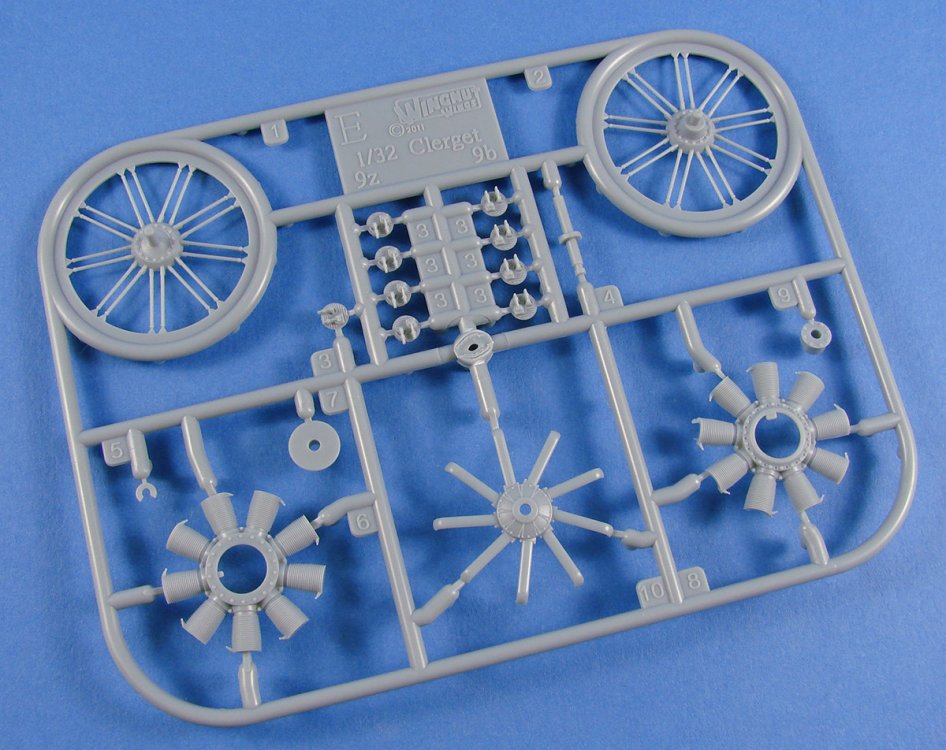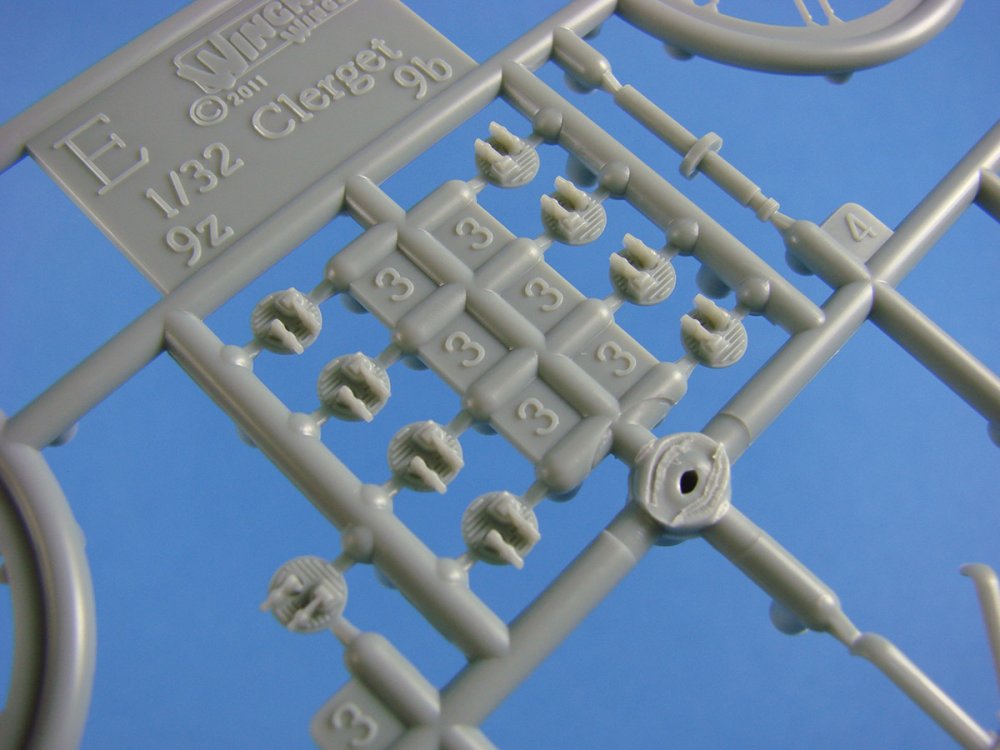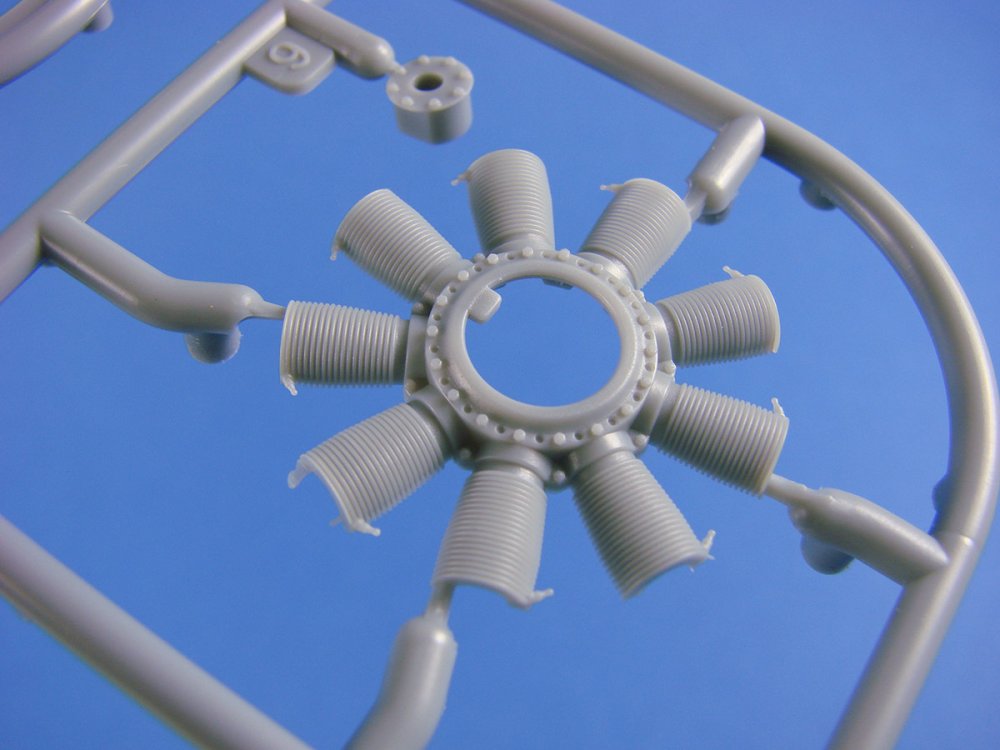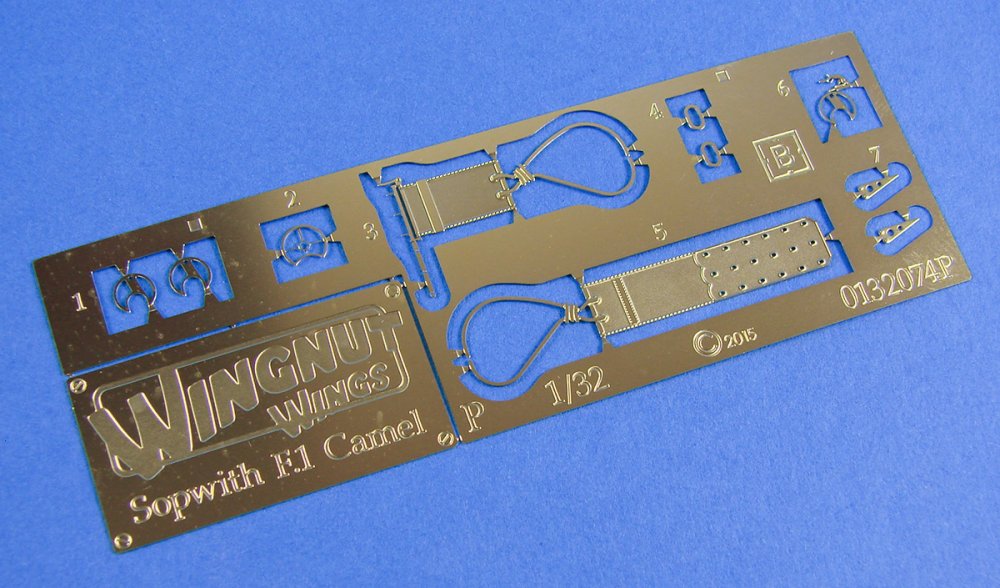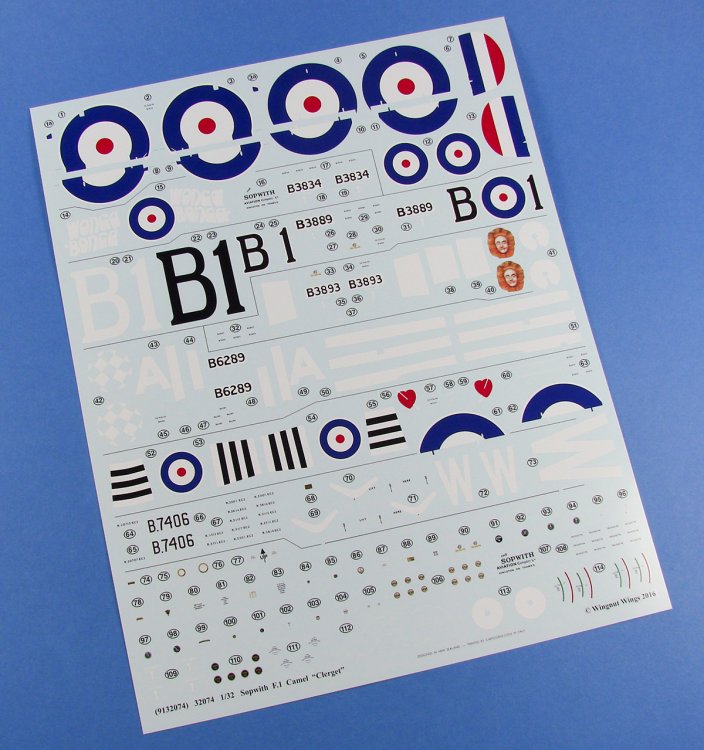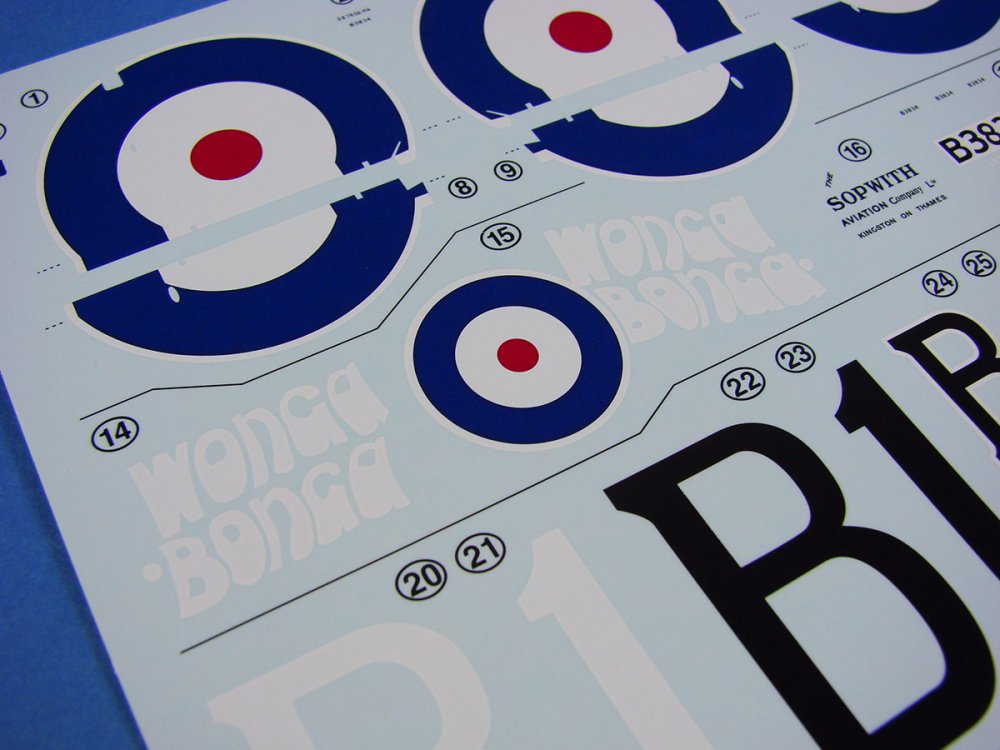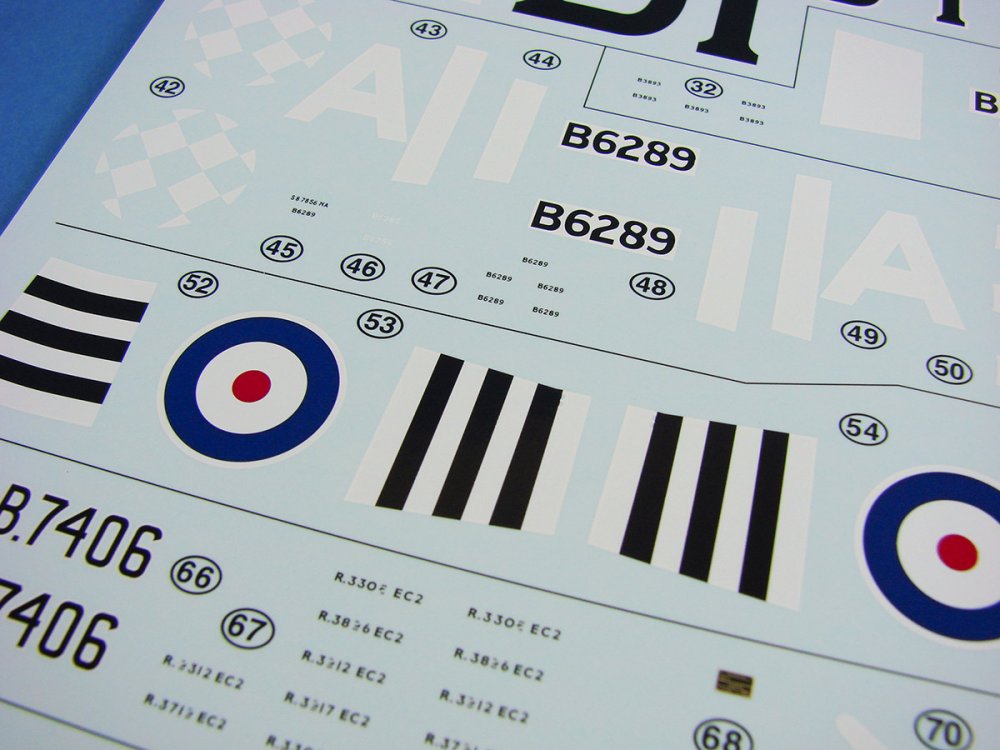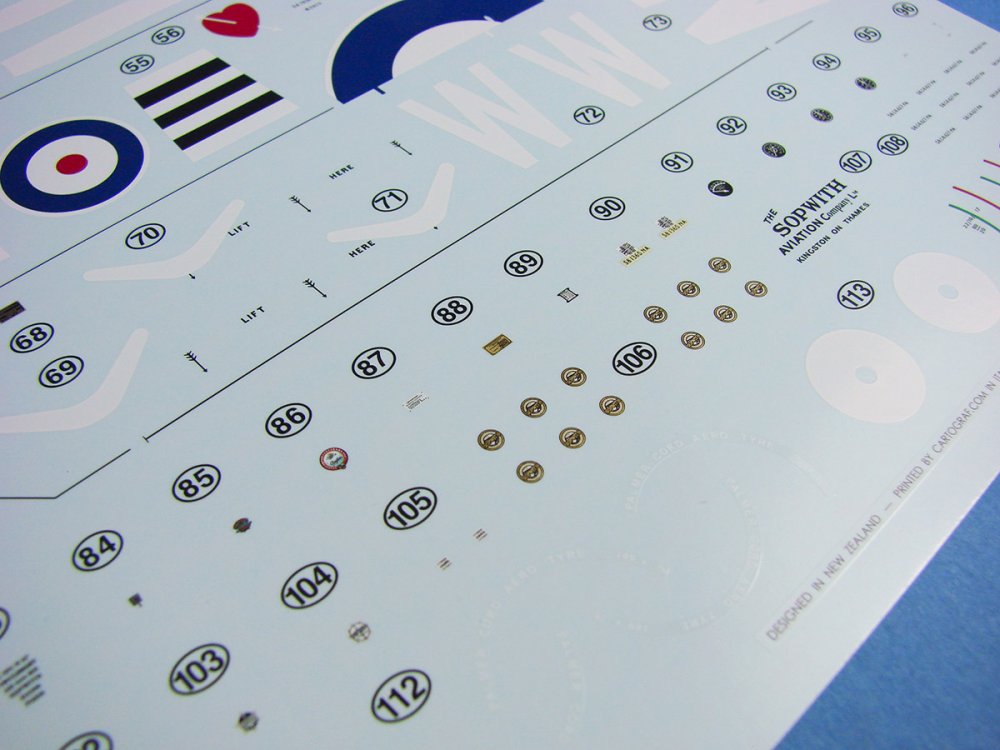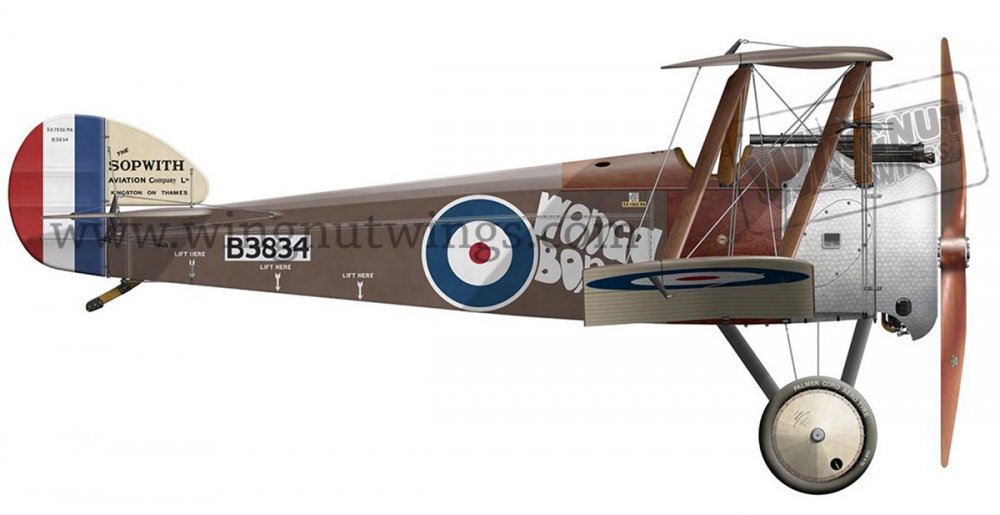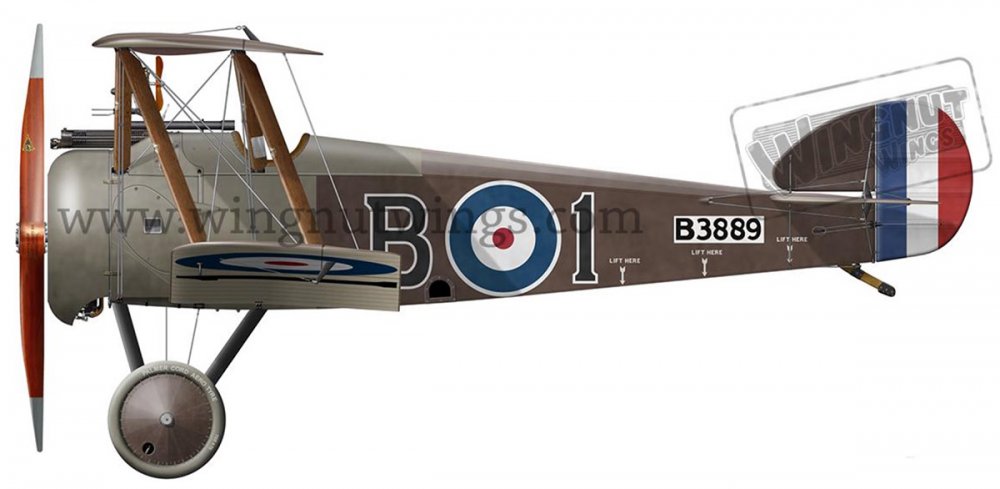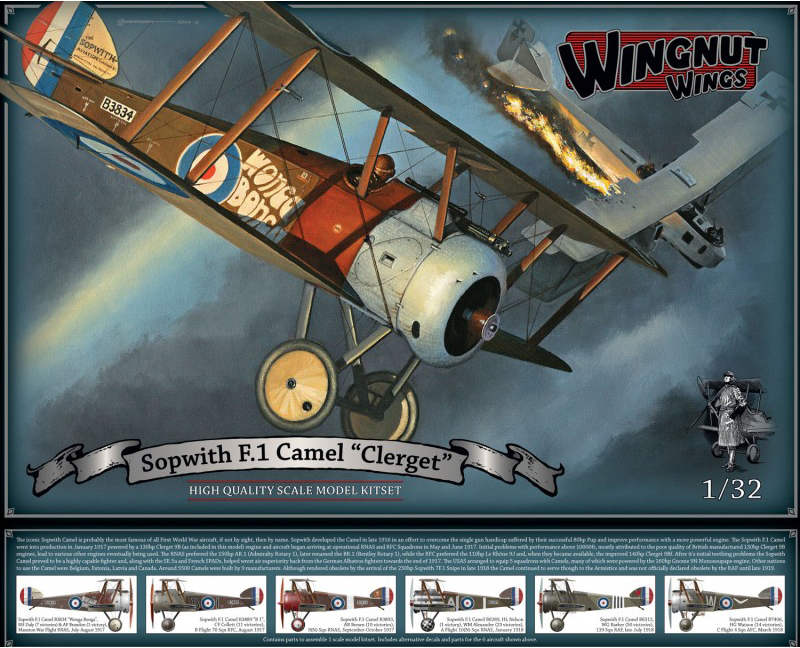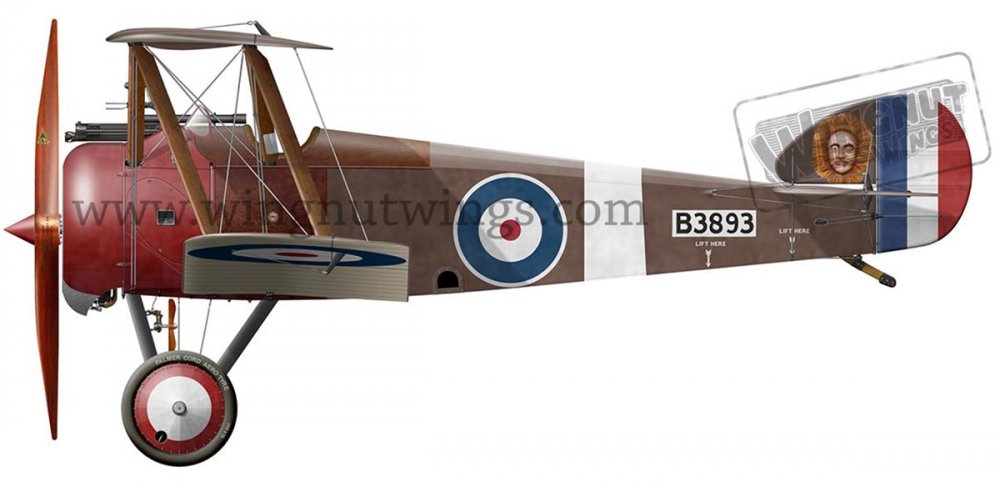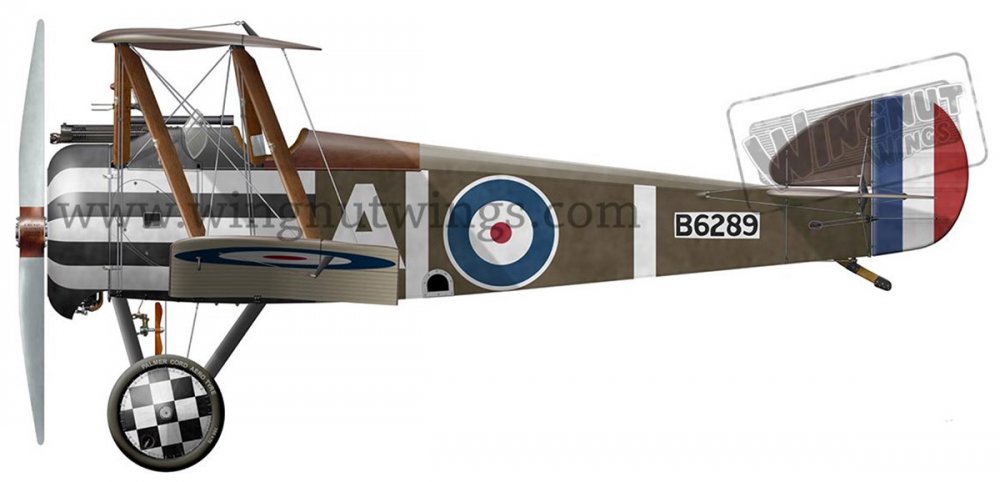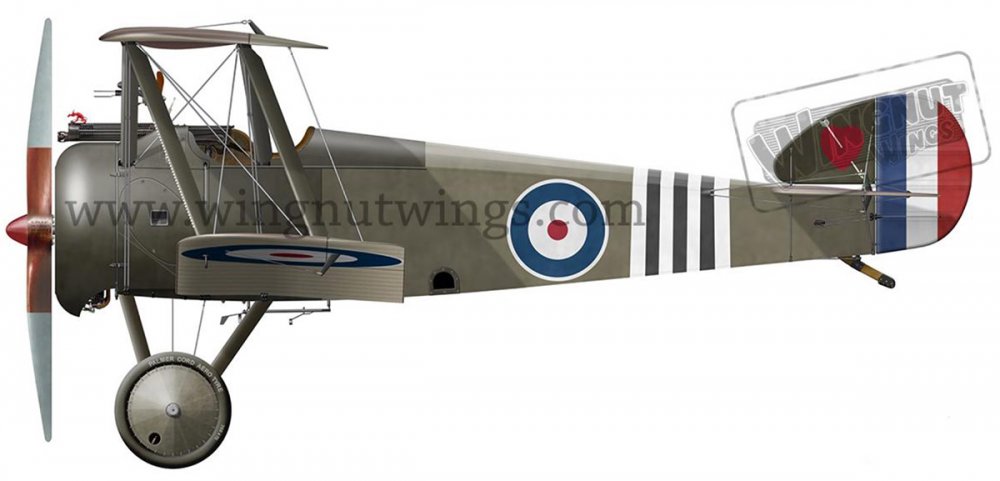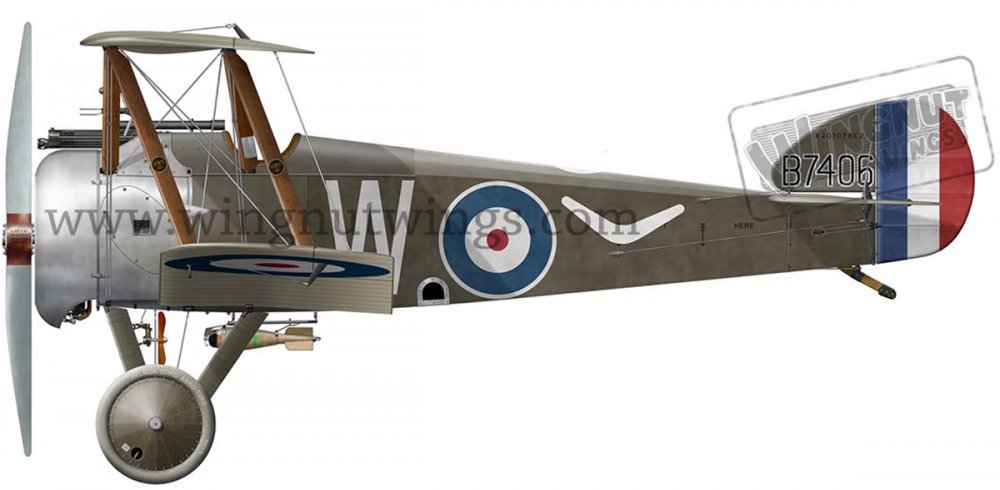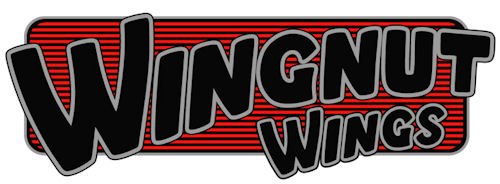-
Posts
3,257 -
Joined
-
Last visited
Content Type
Profiles
Forums
Events
Gallery
Everything posted by James H
-

Profimodeller Fi103 V1
James H replied to JeroenPeters's topic in LSM 1/35 and Larger Work In Progress
You are awesome. So awesome I want to give you applause. Loving the work so far. The Schlepper should help with weight up front and balance it out a little. -
1/32 Fokker D.VII “Early” Wingnut Wings Catalogue # 32067 Available from Wingnut Wings for $99 plus shipping The Fokker D.VII was a German World War I fighter aircraft designed by Reinhold Platz of the Fokker-Flugzeugwerke. Germany produced around 3,300 D.VII aircraft in the second half of 1918. In service with the Luftstreitkräfte, the D.VII quickly proved itself to be a formidable aircraft. The Armistice ending the war specifically required Germany to surrender all D.VIIs to the Allies. Surviving aircraft saw continued widespread service with many other countries in the years after World War I. The D.VII entered squadron service with Jasta 10 in early May 1918. When the Fokker D.VII appeared on the Western Front in April 1918, Allied pilots at first underestimated the new fighter because of its squarish, ungainly appearance, but quickly revised their view. The D.VII was also noted for its high manoeuvrability and ability to climb at high angles of attack, its remarkably docile stall, and its reluctance to spin. It could literally "hang on its prop" without stalling for brief periods of time, spraying enemy aircraft from below with machine gun fire. The D.VII also had problems. Several aircraft suffered rib failures and fabric shedding on the upper wing. Heat from the engine sometimes ignited phosphorus ammunition until cooling vents were installed in the engine cowling, and fuel tanks sometimes broke at the seams. Aircraft built by the Fokker factory at Schwerin were noted for their lower standard of workmanship and materials. Nevertheless, the D.VII proved to be a remarkably successful design, leading to the familiar aphorism that it could turn a mediocre pilot into a good one, and a good pilot into an ace. Manfred von Richthofen died days before the D.VII began to reach the Jagdstaffeln and never flew it in combat. Other pilots, including Erich Löwenhardt and Hermann Göring, quickly racked up victories and generally lauded the design. Aircraft availability was limited at first, but by July there were 407 in service. Larger numbers became available by August, when D.VIIs achieved 565 victories. The D.VII eventually equipped 46 Jagdstaffeln. When the war ended in November, 775 D.VII aircraft were in service. Armament was 2 × 7.92 mm (.312 in) LMG 08/15 "Spandau" machine guns, and the type was powered by either a Daimler-Mercedes D.IIIa/aü, or a BMW IIIa. Maximum speed was between 117mph and 124mph, dependent on powerplant. (Courtesy of Wikipedia) The kit For those that missed out on the four previous release versions of this kit, I suspect the release of Wingnut Wings’ Fokker D.VII (Fok) “Early” kit, will come as welcome news. Dare I say that I also suspect that for those that love this aircraft and bought the previous releases, this will also find a place in the stash. Well, the next time I expected to see the D.VII was in the fabled ‘Special Edition’ kits that have been mooted for some time, but I’m certainly not complaining about seeing another boxing of this beautiful kit. Wingnut Wings’ Fokker D.VII is already a proven kit in terms of engineering and fit, but seeing as the original kits were released 4 to 5 years ago, I’ll take a fresh look at the whole thing again, for the benefit of those who don’t know what this kit offers, and of course to highlight the differences between this and the original (Fok) release. I personally think that the D.VII was one of the prettiest and most aesthetically pleasing aircraft of The Great War, and Steve Anderson’s silver-lined box art captures its lines beautifully. The sides of the box show the FIVE schemes offered in this release with Ronny Bar’s exceptional profile artistry. Inside the box, there are EIGHT medium grey sprues and a single clear sprue, all individually bagged to prevent damage to the fragile parts contained therein. You like decals? Good, as there are FOUR large sheets with this release. A single photo-etch fret is included too. Lastly, a glossy, full colour instruction manual completes the ensemble. The Wingnut Wings release spiel is as thus: Very simple rigging 4 high quality Cartograf decal sheets including fitted ‘Fokker streaky camouflage’, 4 & 5 colour lozenge and markings for 5 early production aircraft 210 high quality injection moulded plastic parts including 19 parts exclusive to Fokker built aircraft (plastic parts are the same as 32011 Fokker D.VII (Fok)) 8 photo-etched metal detail parts Optional cowlings, propellers, low & mid height gun mounts, cockpit coamings, windscreens, low & high exhausts 180hp & 200hp Daimler-Mercedes engines Fine in scale rib tape detail Full rigging diagrams Sprue A As is typical with many WNW releases, this sprue tends to hold many of the smaller components from around the airframe. With the exception of the tubular cockpit sidewalls, you will find almost every other cockpit part moulded here, as well as the fuel tank and gauge, engine firewall, empty ammo bin, gun mounting cross member frames and ammunition feed bin. The latter parts to be used with this release are the MID and LOW brackets and ammo feed bin. Please ensure you decide which aircraft you are building before you set out, as these small differences will mean the difference between accuracy and the unmentionable. Also, don’t confuse these similar parts, as there are ones also supplied for the HIGH mount, which aren’t applicable to this release. The cockpit itself is superbly appointed, with nicely detailed floor, pilot seat (with PE belts) and optional cushion, rear bulkhead with filigree canvas lacing detail, spark advance lever, fuel tank pressurising pump, control column and grip with throttle control, tachometer, and a compass/gimbal. Whilst two instrument boards are included, only one of the parts is suitable for the early D.VII. This is to be fitted with a Bosch magneto, and decals are supplied for the instruments themselves and the various signage on the panel. An optional altimeter is included with the only proviso that you don’t fit it on the right hand side when building option A, with the streaky Fokker finish. Other parts on this sprue include the inner and outer radiator panels (two other sets of parts included, but not for use here), lower engine cowl (common to all versions on this kit), empty belt chutes, optional Oigee gun sight, undercarriage struts and spreader bar (with moulded bungee detail), rudder, tailskid etc. Sprue B Here you will find the fuselage halves, moulded with beautifully subtle external details such as the control cable grommets. Externally, there isn’t much else to see, which is the nature of the aircraft. Due to the various permutations of engine cowl etc. the forward fuselage ends just before the first cowl plate (or in this case, the fabric panels that were a feature of the early machines). This sprue contains many fragile parts, such as the sidewalls cabane struts and engine bay frames. The very nature of these parts means that WNW has moulded small tags onto them which are used for mould pin ejection. This is a neat idea which means that the part itself isn’t impinged upon with ejector pin marks. Of course, you’ll need to snip all of these away and clean up the gate point, but the trade-off is a beautifully fine moulding. With the sidewalls, you will need to snip away the innermost forward stanchion. Some frames on other manufacturer-built airframes were shorter, and the kit parts cater to all versions. The cockpit frames are very fine and very detailed. As with many parts in this kit, I advise that you use a fine razor saw to remove them so that your cutters don’t cause distortion when you clip through the plastic. Other parts here include the lower cowling sump panel, radiator piping and two exhaust options. The only part not pertinent to this release is the oil tank. Sprue C The clear sprue. Not a lot here to talk about except to tell you that it offers two windscreen options with nicely defined frame lines, and the parts are perfectly clear. Sprue D (x2) Of course, you’ll find here the parts for which there are multiples of the same, such as the wheels, separate wheel hubs, axle captive nuts, outer inter-plane struts, ailerons, machine guns, control horns etc. Two Spandau options are given here. These are for the standard plastic guns, and one for a jacketless MG. Onto this will fit a rolled PE jacket for more authenticity. A plastic former is also included for you to roll your flat brass part around. The wheels are quite nice too. These are moulded with separate outer hubs, and within the main wheel hub, a little spoke detail is moulded, along with the nipple to inflate the tyre. Alas, this detail won’t be seen for this version of the D.VII, as the hubs have a fabric patch and not the actual opening. Aileron detail is negligible, as there was barely any rib detail to be seen on the real aircraft. Note that the ailerons aren’t handed either, meaning they are interchangeable. No worries about gluing the port to starboard etc. Sprue E ‘E’ is for engine. In this case, the early D.VII flew with either a Daimler-Mercedes 180 D.IIIa or 200hp D.IIIaü. There are a good number of parts not for use here, such as the Heine and Wolf propellers, plus a sump, rocker covers etc. Still, there are enough parts here to satisfy the ardent detail fanatic. The engine itself comprises around 25 parts, with options of course for the water-cooled intake manifold and plumbing, plus the flywheel. If you aren’t fitting the latter, you can add a generator. I would say check your references, but I don’t think that old cliché is useful when you’re dealing with an aircraft from around one century ago. An air pump is an option if you’re not fitting the water-cooled parts. Sprue F Only two parts here; the full span upper and lower wing panels for the upper wing. These are moulded sans ailerons, so you may pose these dynamically, should you wish. Surface detail really is excellent, with a highly realistic doped fabric appearance and rib caps/tape detail. Leading edges have finely moulded wing stacking pads, and strut locating points are clean. It would be worthwhile just drilling out the holes further for the control cable points, but remember, that the D.VII itself doesn’t have much in terms of rigging, which will doubtless please a lot of modellers. Wing trailing edges are very thin too, with light being visible if you hold them up to a lamp. This area also has a subtle scalloped finish, as would be the result of the doped fabric pulling on the wire trailing edge of the real aircraft. As the D.VII’s upper wing is relatively thick, WNW has included some locating points within the wing, that after gluing, should provide some nice reinforcement and prevent the wing from being squeezed and cracking any glued joint. Sprue H This is another sprue that’s common to all previous D.VII kit releases, and it contains a full-span lower wing panel with upper port and starboard panels, two upper cockpit deck options, the single-piece stabiliser and elevator. Wing and tail-plane detail is again superb and restrained, with positive strut positions where appropriate, and nice elevator hinge detail on the stabiliser. The elevator itself is, like the aileron in that detail is limited. Again, this is correct. You will also find two upper fuselage/cockpit decks here. Sprue I This is the last grey sprue and it contains the various permutations of cowl parts including both side and upper panels. This contains two different sets of side panels, a single nose cowl and three options for upper engine cowls. Other parts are included for these, but they aren’t applicable to this specific release. One set of side cowls will need to be modified if you are using the louvered option. This involves cutting out a hole for the low exhaust stack, and the removal of four forward louvres. Parts for the undercarriage wing are found here too, and this version doesn’t require you to cut and shorted them. With regards to the plastic, there really isn’t anything to fault anywhere on this kit. Seam lines are negligible, flash is pretty much non-existent, and ejector pin marks won’t hinder you. No sinkage etc. can be found anywhere. This model will be a joy to build from that perspective. Photo Etch The parts on this look identical to the previous D.VII releases, but the layout is different. This may be to incorporate the nameplate that is now a part of WNW releases. Either way, these parts are interchangeable with those of the previous releases. Here you will find the Spandau MG jackets, end caps and reticules, seatbelts and the MG flashguards. Quality is excellent, with parts being held in situ by small tags that will be easy to cut through. Decals As previously stated, there are FOUR large decal sheets here, printed by Cartograf. It’s great to see WNW add a Fokker streaking decal set when only one of the schemes actually calls for it all (with the exception a small fuselage piece on one other scheme. This is quite strange when you consider that they don’t include the black and white stripy decal for Bruno Loerzer’s machine. It’s very easy to mask off though, but they have included full side pattern decals in other releases. One sheet contains a full suite of streaking decal (with some sections not for use), and wheel hub outer edge decals. One sheet contains a set of 4-colour upper and lower wing lozenge, and another has 5-colour lozenge, but this time, the lower lozenge represents the coat of light blue paint that was applied. In a twist, the first scheme that employs the streaking decal, also includes the lighter lower wing lozenge applied to the UPPER surfaces! I can guarantee that if you have this finished model on your club stand, someone will tell you that you did it wrong! Probably my favourite scheme of them all, and they are all worth building. The remaining decal sheet contains all of the national markings, motifs, as well as some tail-plane lozenge and sections of lighter lozenge that fit within the cockpit area (for the non-streaky fuselages). More lozenge is included to wrap around the upper cockpit frame and some pieces for the rear bulkhead. Cockpit instrument and signage decals are included, as are a full set of stencils. All decals are glossily printed, thin and contain minimum carrier film. Colours are solid and authentic, and printing is in perfect register. The FIVE (actually six!) schemes are: Fokker D.VII, 262/18, Emil Thuy, Jasta 28w, mid-1918 (35 victories) Fokker D.VII, Rudolf Berthold, Jasta 15/JG2, mid-1918 (44 victories) Fokker D.VII, Max Kliefoth, Jasta 19, October 1918 (3 victories) (SCHEME C1) Fokker D.VII, Hugo Schäfer, Jasta 19, October 1918 (SCHEME C2) Fokker D.VII, Reinhold von Benz, Jasta 78b, August 1918 (1 victory) Fokker D.VII, Bruno Loerzer, Jasta 26/JGIII, November 1918 (44 victories) Schemes C1 and C2 are very similar with the exception of the nose, undercarriage and cabane strut colours, hence the inclusion of both options. Instruction Manual No one does these quite like WNW. This glossy A4 publication contains 26 pages, printed in full colour and begins with a parts map and colour references which are used throughout the construction process. The illustrations are in drawing style, and generally coloured in greyscale, but blue is used to highlight new parts addition, and yellow where PE parts are to be added. Full colour illustration is also supplied for key areas, such as the cockpit and engine, giving the modeller an immediate idea about how things should look once painted, despite the references being given throughout construction. Contemporary and period photographs are included, and the last pages are taken over by the excellent colour profile work of Ronny Bar, with some historical and scheme notation. Decal placement is easy to follow, as is the colour guide. Conclusion I'm more than sure that this new release will be more than welcome by WNW enthusiasts, and not least those that missed out on the previous four incarnations of this kit. The Fokker D.VII is packed full of just about every detail you could wish for, with maybe only a little wiring needed here and there. This really is a very comprehensive kit, and one that builds perfectly. Again, it's great to see a number of machine-specific options included here, and a total of four large decal sheets to create another series of beautiful examples of this important aircraft type. Price-wise, I don't think this can be beat. Building this model really is an adventure, and a thoroughly enjoyable one at that. Now, I wonder if we'll see any WNW separate decal sets for this release! Very highly recommended My sincere thanks to Wingnut Wings for the sample reviewed here. To purchase directly, click THIS link, or check your local distributor.
-

wingnut wings Wingnut Wings Sopwith 2F.1 'Ship's Camel'
James H replied to JeroenPeters's topic in Aircraft Reviews
Excellent review and photos. Nice to see what the changes are. Would've been good to see an option to split the fuse. May have to get this one. -
1/32 Supermarine Spitfire Mk.IXc Revell Kit No. 03927 The Supermarine Spitfire is a British single-seat fighter aircraft that was used by the Royal Air Force and many other Allied countries before, during and after World War II. The Spitfire was built in many variants, using several wing configurations, and was produced in greater numbers than any other British aircraft. It was also the only British fighter to be in continuous production throughout the war. The Spitfire was designed as a short-range, high-performance interceptor aircraft by R. J. Mitchell, chief designer at Supermarine Aviation Works. Mitchell pushed the Spitfire's distinctive elliptical wing to have the thinnest possible cross-section, helping give the aircraft a higher top speed than several contemporary fighters. Mitchell continued to refine the design until his death in 1937, whereupon his colleague Joseph Smith took over as chief designer, overseeing the development of the Spitfire through its multitude of variants. The Spitfire saw action in the European, Mediterranean, Pacific, and South-East Asian theatres. Much loved by its pilots, the Spitfire served in several roles, including interceptor, photo-reconnaissance, fighter-bomber and trainer, and it continued to serve in these roles until the 1950s. Although the original airframe was designed to be powered by a Rolls-Royce Merlin engine producing 1,030hp (768 kW), it was strong enough and adaptable enough to use increasingly powerful Merlins and, in later marks, Rolls-Royce Griffon engines producing up to 2,340hp (1,745 kW). As a consequence of this, the Spitfire's performance and capabilities improved over the course of its service life. The kit It’s been around three years now since Revell released their new-tool Spitfire Mk.IIa, and I’m quite surprised that they’ve left it this long to bring subsequent versions to market. That surprise is even more manifest when you take a close look at the new sprues in this release. All of them carry the year ‘2014’ on them, so this model has been in gestation for quite a while now. In fact, the Mk.IIa itself, released in 2014, also carries that date. Between these kits, there are only three common sprues, with the main components etc. obviously being new to this specific Mk.IXc kit. Styling of the new parts is the same as the earlier kit, such as riveting etc, so I imagine both kits were in development in tandem. Revell’s website gives the kits specifics as: Detailed Mk.IXc wings with guns Detailed cockpit and instrument panel Detailed radiator Rotating 4 blade propeller Alternative bomb load Detailed undercarriage Revell’s new-look box is used here, but to the same flimsy design we’ve all come to know and love, and the sprues within are packaged as multiples within clear bags. This isn’t something I like, as it risks the damage of parts. Looking around the fuselage exterior, Revell’s maniacal riveter has pretty much done the same job he/she did on the earlier Mk.IIa release, albeit this time, the Mk.IX did mainly have flushed rivets, dependent on where the machine was built. If domed rivets were used, this was generally on the aft fuselage, towards the rear of the cockpit area. You will of course need to check your references, as the old caveat goes. Either way, I do feel that what is given does need to be dialled back a little, perhaps with an airbrushing of Mr Surfacer and then the exterior being sanded back to plastic. Your mileage may vary and you may not be too bothered. I don’t have the Mk.IIa kit to hand any longer, but I think this aspect of the model may not be quite as extreme as the earlier release. If you want to add raised rivets, then this is very easy with a product such as Archer raised rivet decals. This is the same course of action I took for my Mk.IIa when I wrote the ADH/Doolittle title on building that kit. Of course, the fuselage halves are newly tooled as you would expect for a Mk.IX, and the rest of the exterior looks very nice indeed, with delicate panel lines, cowling fasteners and general outline. I have to say that it does look like a Mk.IX. Where I think things fall down a little is around the wingroot, where it doesn’t really have that deep, scalloped shape that I associate with this area, and against the light, it looks a little bumpy when looking from the rear, towards the front. I also note a few sink marks here and there, but they should be easy to fettle. Internal fuselage wall detail is simple, with most detail being separate parts. A couple of ejector pin marks reside in the rear cockpit area, and you will need to eradicate these. Again, the wings are newly-tooled as befits the changes to this later variant. Externally, detail really is very nice, with more fine panel lining, access ports etc. and the various bumps associated with the weapons bays and undercarriage seem to be on the mark. Rivet detail does seem to be finer than that of the fuselage, and I am more than happy with this. I can’t see any moulding defects here, although there is a little light flash that will need to be removed. I would have liked to have seen the small undercarriage position indicator panels as separates as these should be open when in the down position. Also, the moulded detail in the ceiling of the wheel wells is a little simplistic. The same can be said for the liners, as these are devoid of detail. Eduard released a nice fix for this in their earlier Mk.IIa sets, and I expect they’ll do the same here. Flap detail is moulded here (cue the many who say they weren’t dropped on the ground, and the £5 fine etc. etc.), but it is simplistic. The same is to be said of the flap parts themselves. Cockpit detail is very good, especially for a kit of this price point, and the instrument panel, whilst the same as for the Mk.IIa kit, does seem to generally hold very close to that of the Mk.IX. I’m sure there were differences somewhere, but I’m certainly not educated enough to notice what they are. Revell did miss out some interior detail on the original kit, and I’m sure there should be more internal sidewall detail than is supplied, such as various boxes and panels that sit in between formers, with those raised, elongated details etc. I can’t be any more descriptive than that. The missing details from the original kit were soon picked up by Eduard, who released some rather nice sets for that kit, and I have no reason to presume they won’t do the same for this, although it would’ve been nice to have had a properly appointed office to start with. Unlike the earlier kit, at least with this one you can guarantee that the metal ailerons are suited to the Mk.IX, and these are moulded onto one of the sprues that are common to both kits. Here is included a good amount of detail for the cockpit, as well as one of the underwing radiators, instrument panel and rear pilot main former, complete with lightening holes that don’t need to be drilled out. A little flash can be seen here and there on some small parts, and on the radiator, but this is easy to remove. Another common sprue contains the wingtips, stabilisers, elevators, cockpit sidewalls and a former and bulkhead. The stabs and elevators are designed to be applicable to all Spitfire releases, meaning that on this kit, you will need to cut away a little of the stabilisers to allow the correct elevator setup to be used. In this case, as they are supplied, with the outer edge running front to back, and not angled as per the Mk.IIa kit. Surface detail of flying/control surface parts is excellent, with subtle riveting on the upper sides of the stabs, but strangely enough, more pronounced on the underside. A lot of the new Mk.IX-specific parts are to be found on another new-tool sprue. Revell has included options for both early and late exhausts, a new spinner/back-plate ensemble, wide-chord rudder, second radiator to match the original part, two-piece lower engine cowl with integral intake, new undercarriage struts and gear doors, and parts for a centreline bomb and carrier. As with the earlier release, I do feel that the undercarriage struts are perhaps just a tad too simplistic, but certainly not a deal-breaker. Seams do exist on these parts, and they will need particular attention before assembly. A small clear sleeve contains the last six small sprues. Two of these pertain to the wheels/tyres. These are moulded with integral four-spoke hubs, and for my, the hub detail doesn’t look right when I compare them with the photos in my Monforton Spitfire book. The tyres also don’t carry any Dunlop writing, or size etc. They also aren’t weighted. I’m none too impressed with these, and I would seem some aftermarket parts. Two more sprues hold the parts for the underwing bombs and carriers, plus the new propeller blades for this release. Shape-wise, they do look ok, but the tips seem to be clipped. A couple of swipes with a sanding stick along the trailing edge should correct that though. The last grey sprues contain the radiator interior grilles and the rudder pedals. Now, when we complain of multiple sprues being packed into a single bag, it’s said for a reason. All three clear sprues suffer this, and in mine, some parts had come adrift, including the main hood. Some very light scuff marks will need to be removed from this before assembly. Out of the three clear sprues, two of these are new to this release. These include a revised windscreen and hood, clear wingtips for the clipped-wing version, and two gunsights, of which only one is slated for use in this release. The clear parts themselves are superbly clear and also quite thin. Unfortunately, the hood on my sample is a short-short and will need to be replaced. A single decal sheet, printed by Cartograf, is included here. Being Revell, their remit seems to be for the decals to have a matt finish. I admit to preferring glossy decals, but we can’t have it all ways. Printing is nice and solid, with authentic colour and minimal carrier film. Registration is also perfect. As well as the serials, codes and national markings, stencils are also included, as is a two-part instrument panel decal, but unless you have gallons of Solvaset or Mr Mark Setter, I would ignore this, or at the very least punch the instruments from the main decal, or use Airscale for the instrument panel. The TWO schemes included are: Mk.IXc, DN-T, MJ832, No.416 Sqn, Royal Canadian Air Force, Tangmere, England, May 1944 Mk.IXc, UF-Q, MJ250, No.601 Sqn, Royal Air Force, Fano, Italy, November 1944 Instructions An A4 colour manual shows assembly over 73 easy-to-understand stages, with clear annotation and references made to Revell paints. I much prefer this new format of instructions over the ones Revell used to supply. The last pages clearly show each scheme and the colours used, plus decal placement. Conclusion I could moan about this and that, and indeed I have listed the things I don’t particularly like, or those that could have been better. I’ve also tempered that were possible with notes to say how whatever issue could be overcome. As a reviewer, I feel that it the best approach. However, I must remember the price point of this release. It’s roughly a third that of Tamiya’s Mk.IX kit. Of course, costs increase if you start to add any subsequent detail sets. A minimum of new wheels, interior set and wheel bay set will add around another £35 to that cost. It’s a juggling act, but if you are happy to do some of the extra work yourself, or you simply want a nice looking Mk.IX out of box, then this kit will more that suffice whilst providing some nice detail and what appears to be a model with accurate lines. If you’d like to see how I tackled the Mk.IIa, with tips that are pertinent to this release, then check out the ‘How to Build’ book from Doolittle Media. Recommended My thanks to Revell and Doolittle Media for this review sample.
-
Frickin' awesome! Give me a quick tip on that wood grain. I have something coming off soon that would benefit
-
Just got these:
-
Hi all, I'm looking at building a 1/32 Dr.I sometime soon, and want to know the best way to replicate the streaky Fokker finish? Are there readily available decals for this, or not? Hope you can help. Jim
-

Can we lobby someone for a 1/32 Mc 202 "Folgore"?
James H replied to Mikester's topic in Modelling Discussion
I agree. I'll mention it to Neil this weekend and see what his thoughts are. -
I think the original plan was a B.Mk.35, but as in a lot of kit development, things change. The original instructions I sent you were also in development, and it's likely that HK revised their plans so as not to complicate things at this stage. I recall the kit was behind schedule. The idea to settle on a Mk.IX and Mk.XVI will have been for numerous reasons, whether through information (or lack thereof), and maybe scheduling (distributors like to push as hard as consumers!) Anyway, just for Steve, here are some louvres.
-

trumpeter Junkers Ju 87A
James H replied to James H's topic in LSM 1/32 and Larger Aircraft Ready for Inspection
Aviation Megastore? -

trumpeter Junkers Ju 87A
James H posted a topic in LSM 1/32 and Larger Aircraft Ready for Inspection
Hi all, I thought I'd post some photos of my 1/32 Trumpeter Ju 87A, done in Condor Legion colours. The markings are custom masks, as is the emblem on the spat. The model was built with Eduard extras, and the paints are from MRP (Mr Paint, Slovakia). In all, a trouble-free project. I modded the cowl to correct a couple of anomalies but didn't bother with the lower spat shape. I could live with that. This model and build article are in the latest edition of Military Illustrated Modeller, which should be in the shops right now. -
You're bloody obsessed with louvres!!! As you say though, those don't apply to the versions modelled in this release as they are earlier.
-
1/32 Sopwith F.1 Camel “BR.1” Wingnut Wings Kit No. 32070 Available from Wingnut Wings for $79.00 plus shipping The Sopwith Camel was a British First World War single-seat biplane fighter aircraft introduced on the Western Front in 1917. It had been developed by the Sopwith Aviation Company as a successor to the earlier Sopwith Pup and would become one of the most iconic fighter aircraft of the First World War. The Camel had a mostly conventional design for its era, featuring a wooden box-like fuselage structure, an aluminium engine cowling, plywood panels around the cockpit, and fabric-covered fuselage, wings and tail. While possessing some clear similarities with the Pup, it was furnished with a noticeably bulkier fuselage. For the first time on an operational British-designed fighter, two 0.303 in (7.7 mm) Vickers machine guns were mounted directly in front of the cockpit, synchronised to fire forwards through the propeller disc. In addition to the machine guns, a total of four Cooper bombs could be carried for ground attack purposes. Production Camels were powered by various rotary engines, most commonly either the Clerget 9B or the Bentley BR1. In order to evade a potential manufacturing bottleneck being imposed upon the overall aircraft in the event of an engine shortage, several other engines were also adopted to power the type as well. A metal fairing over the gun breeches, intended to protect the guns from freezing at altitude, created a "hump" that led pilots to refer to the aircraft by the name Camel. However, the Camel name never had any official status in regard to the aircraft. The 130 horsepower (97 kW) Clerget 9B was an important engine for the British Royal Naval Air Service and Royal Flying Corps, being license-produced in Britain and powering several important British aircraft, including the Sopwith Camel. However, at £907 a copy it was expensive, and prone to overheating, so the Admiralty asked Lieutenant W. O. Bentley, an established pre-war engine designer, to produce a modified version to solve these problems. Bentley came up with his idea of an engine - fitted with aluminium cylinders with cast iron liners, and aluminium pistons. Dual ignition was introduced to improve reliability, and the stroke increased to 6.7 inches (17 cm) which allowed power to be increased to 150 horsepower (110 kW). The cost of the engine was also reduced, falling to £605 (almost £40,000 at 2016 conversion) per engine. The resulting engine, initially known as the A.R.1 for "Admiralty Rotary", but later called the BR.1 ("Bentley Rotary") was manufactured in quantity, although initially against Admiralty orders. It was standardised for the Camel in RNAS squadrons, but unfortunately there were never enough to entirely replace the inferior and more expensive Clerget engine in British service, and most RFC Camel squadrons continued to use Clerget engines; in fact licensed production of the Clerget continued. (Courtesy of Wikipedia) The kit We very recently took a look at the Clerget-engine Sopwith Camel kit, and this kit isn’t too dissimilar from that, with only a single sprue being different. This relates to the engine of course, with this kit having the Bentley BR.1 engine. We won’t be looking at each sprue as we already have done, with the exception of the BR.1, and the parts options which are to be used in this release. Wingnut’s official kit info describes the kit as thus: 164 high quality injection moulded plastic parts. 16 part highly detailed 150hp Bentley BR.1 engine. Optional fuselage halves with alternative lacing details, windscreens, cut down cockpit decking, common or Bentley style engine cowlings, small & large cut out top wing centre sections, early and late undercarriage, propellers, 20lb Cooper bombs & carrier. 10 photo-etched metal detail parts. 24 page fully illustrated instruction manual. High quality Cartograf decals for 5 aircraft Sprue E (Bentley BR.1) Being a derivative of the Clerget, it’s not surprising that this engine is generally very similar, but it’s the attention to detail, of course, which drives our passion with these kits. Being WNW, you can pretty much guarantee that the levels of research were beyond our own mortal levels of understanding! The engine itself has 16 parts, with the rear of the cylinder block being separate to the front, but not along a centreline joint, which is a welcome touch. The joint itself is pretty much hidden from view when built, with it lurking around the rear face. Cooling fin detail is amazingly fine. The cylinder heads are separate and also have some beautiful detail, including the spark plugs, which are tiny! More nice detail on the induction pipe section too. As with many parts in WNW kits, I recommend you take a fine razor saw to this sprue when removing a number of the parts for assembly. So what else is different? Essentially, nothing. However, you do get the opportunity to use some parts here that weren’t for use in the Clerget kit. Whereas the aforementioned kit has one cowl choice, the Bentley offers TWO, out of a possible four that are on Sprue A. The unused parts on this sprue, more or less mirror those of the Clerget release. This also applies to the other sprues, including the clear parts. One other part of note that can be used in this release is the mid-upper wing section, with the larger upward viewing cut-out. Both large and small cut-out sections are for use in this release, but with the Polish scheme E being the one for the larger cut-out. Decals Five scheme options are available here, printed on a single, large Cartograf sheet. As with the previous kit, the printing is perfect with solid and authentic colour, minimal carrier film and perfect register. The finish is also glossy, which is what I personally prefer. Stencils are included, as are instrument decals. The five schemes on offer are: Sopwith F.1 Camel B6390 “Black Maria”, R Collishaw (60 victories), Seaplane Defence Squadron RNAS, December 1917. Sopwith F.1 Camel B7190 “Donner-Wetter!”, WGR Hinchliffe (6 victories), “C” Flight 10(N) Sqn RNAS, March 1918. Sopwith F.1 Camel B7270, AR Brown (10 victories – including Manfred von Richthofen, the Red Baron), 209 Sqn RAF, April 1918. Sopwith F.1 Camel B7275 “P”, HF Beamish (11 victories), RA Little (47 victories), E Pierce (9 victories) & R Sykes (6 victories), “C” Flight 3(N) Sqn RNAS & 203 Sqn RAF, March - April 1918. Sopwith F.1 Camel F5234, KM Murray, 7th Air Escadrille (Kościuszko Squadron), Poland, October 1920 Conclusion As with the Clerget release, there isn’t anything at all to fault or criticise here. If you like colourful schemes, then I think WNW has done very well to incorporate some of the more unusual elements of what are normally very samey-looking aircraft, especially with the blue/white striped nose of scheme B. I don’t doubt that will be high on the options for many purchasers of this kit. Another classy release that will offer the modeller the perfect levels of detail and buildability. Highly recommended My sincere thanks to Wingnut Wings for this review sample. To purchase directly, click THIS link. Watch out for our reviews of the remaining three Camel kits (USAS, Ships, Le Rhone) on LSM soon.
-

Profimodeller Fi103 V1
James H replied to JeroenPeters's topic in LSM 1/35 and Larger Work In Progress
That looks like a proper engineering project. I'm sort of getting memories of the one I reviewed now. Good to see it being built. -
Thanks for posting, Malcolm. If anyone can donate even one kit, and maybe an extra tool or glue you have, then this will help. Remember....kits must be un-started, and not of modern/current military types as the latter could have an adverse effect on rehabilitation.
-

profimodeller Profimodeller 1/32 Dobbas Container (for Ju-88)
James H replied to JeroenPeters's topic in Aircraft Reviews
What a great little kit! Nice photos too. I bet that did wonders for the streamlining effect. -

Profimodeller Fi103 V1
James H replied to JeroenPeters's topic in LSM 1/35 and Larger Work In Progress
Way too cool. -
-
Looks like it needs a little TLC. Great shots!
-
1/32 Sopwith F.1 Camel “Clerget” Wingnut Wings Kit # 32074 Available from Wingnut Wings for $79, plus shipping The Sopwith Camel was a British First World War single-seat biplane fighter aircraft introduced on the Western Front in 1917. It had been developed by the Sopwith Aviation Company as a successor to the earlier Sopwith Pup and would become one of the most iconic fighter aircraft of the First World War. The Camel was typically powered by a single Clerget 9B rotary engine and was armed with twin synchronized .303 Vickers machine guns. Though proving difficult to handle, it provided for a high level of manoeuvrability to an experienced pilot, an attribute which was highly valued in the type's principal use as a fighter aircraft. In total, Camel pilots have been credited with the shooting down of 1,294 enemy aircraft, more than any other Allied fighter of the conflict. Towards the end of the Great War, the type had also seen use as a ground-attack aircraft, partially due to it having become increasingly outclassed as the capabilities of fighter aircraft on both sides was rapidly advancing at that time. The main variant of the Camel was designated as the F.1; several dedicated variants were built for a variety of roles, including the 2F.1 Ship's Camel, which was used for operating from the flight decks of aircraft carriers, the Comic night fighter variant, and the T.F.1, a dedicated 'trench fighter' that had been armoured for the purpose of conducting ground attacks upon heavily defended enemy lines. The Camel also saw use as a two-seat trainer aircraft. In January 1920, the last aircraft of the type were withdrawn from RAF service. (Courtesy of Wikipedia) The kit Wingnut Wings always said they wouldn’t release certain subjects as they had been adequately covered by other manufacturers, such as Roden. This was very disappointing for a lot of WNW fans as they wanted to see the magic Kiwi touch applied to these key aircraft. One of these Holy Grail subjects was of course the Sopwith Camel, and after much friendly pressure from fans, worldwide, we now see not one, but FIVE new Camel releases, as well as another in the Duellist series. These kits cover all the various incarnations of the famous little fighter, with their various engine types, and those in unusual service. This review covers the more familiar Clerget-engine type. The kit spec is as follows: Dimensions 26cm x 18cm High quality Cartograf decals for 6 aircraft 166 high quality injection moulded plastic parts Optional fuselage halves with alternative lacing details, windscreens, cut down cockpit decking, early and late undercarriage, propellers, 20lb Cooper bombs & carrier Highly detailed 18 part 130-140hp Clerget 9B/9Bf engine 10 photo-etched metal detail parts Fine in-scale rib tape detail Full rigging diagram Steve Anderson’s lovely artwork adorns the lid again, with Ronny Bar’s scheme profiles along the edge. All new Camel releases have many common parts which are supplied across THREE light grey sprues and one clear sprue. Sprues A, C, and D are labelled as ‘Sopwith Camel’, whilst Sprue B is the only one to carry the ‘Sopwith F.1 Camel’ nomenclature. Specific to this kit is the Clerget 9B engine which resides on Sprue E, with ‘E’ typically equated for ‘engine’ on WNW releases. This release also contains a single fret of brass PE, as well as a single, large decal sheet covering all SIX schemes. All sprues are separately bagged and these numerous bags are sealed in a large outer one that has an identifying slip which states which kit engine is included. In this case, Clerget. Sprue A The first thing you’ll notice here are sheer number of parts. Firstly though, a quick look at what the cockpit offers. Everything I like about WNW engineering can be seen on two of the main cockpit parts, namely the port and starboard sidewalls. These delicate parts have been moulded with integral cabane struts, so of course there’s no need to wonder about the angle of these when you later add the wings. The walls themselves are superbly detailed, with the only ejector pin marks in areas that will be covered with subsequent assemblies. A small number of ejector pin nodes will need to be clipped off certain areas too. This feature minimises the need to place them on parts themselves. The cockpit floor is very unusual in this case because it has the pilot seat base and lower fuel tank integrally moulded. A separate seat back has some nicely moulded wicker effect. Other cockpit parts included here are engine back plate, magazines, carburettor air induction pipe, Vickers machine guns with Hyland cocking levers (water cooling jacket being separate to the main breech), empty ammo chutes etc. On this sprue, you will notice a central lower fuse bomb rack and accompanying 20lb bombs, the latter being comprised of two parts each, wheels with separate external hubs, various engine cowls, undercarriage V forks (two types, early and late) and spreader bar, upper fuselage gun cowls, and wing struts etc. As this is a common sprue, it’s important that you check this against the parts map as there are a good number of parts that must not be used with this release. Among those are three of the four engine cowls, two machine gun breeches, one of the two undershields, and one set of wheels/hubs. Two spinner options are supplied in this release. Sprue B A nice feature here is the full span lower wing with its excellent rib tape rendition and subtle leading edge rib-lets that you can just about see in the correct light. The fabric and rib representation has been very nicely captured. Strut mounting positions are moulded as key slots so as to make their attachment much less ambiguous. Ailerons are separate. Control cable openings with the moulded pulleys are included. These will be fitted over with a clear cover which you may be best giving a light misting of clear yellow or orange to simulate how these ended up in exposure to UV light. Instructions do say that these were generally overpainted in the wing colour. Two upper centre wing sections are included, with the same level of detail, but only one will be used in this release. Note the tabs onto which the outer panels will slot. There are actually THREE fuselage halves in this release, with the extra being an alternative starboard option that has different lacing. External detail is extremely refined with that neat stitching pattern, wooden panels at the cockpit area, with nail lines, and the forward access panels moulded in situ complete with fastener detail. Of course, the upper MG deck is separate, as is the cockpit coaming. Internally, the cockpit has rib and stringer detail. The rest of this will come from the cockpit tub. As for the coaming, there are a number of elements of surgery you may need to employ here, depending on the scheme you choose. This could range from the removal of the rim of the fuel filler port, to cutting back the coaming almost totally at the front end. Illustration is clear as to what needs doing and for what scheme. Lastly, an instrument panel is included here. Decals are supplied for the instruments, and you will also need to remove a small amount of plastic to accommodate the interrupter gear that was used on this version. Sprue C This clear sprue contains the various permutations of windscreen, and the numerous pulley access ports for the wings. Being a common sprue, there are several other parts which should not be used. Clarity is excellent. Sprue D Despite the Camel’s wings being very thin, Wingnut Wings has used slide moulding technology to incorporate a slot into the single part upper wing panels, into which the centre section tabs will locate. This is very impressive. Those wings exhibit the same finesse of detail as the lower wing, and this continues to the other flying and control surfaces that are moulded here, such as the fin/rudder, ailerons and tail-plane. The tail-plane and fin/rudder are moulded as single pieces. I think these can be scored so as to droop the elevators and angle the rudder, but be careful if you choose to do that. Two propeller options are supplied. Other sprue parts include the compass/inclinometer, rudder bar, control column, control horns, Rotherham petrol pump, Aldis sight, etc. Sprue E In any sprue indicates a reason to use a razor saw to remove parts, it is this one. E is of course for ‘engine’ and here we have the Clerget, comprising of 17 parts. Yes, the spec says ‘18’ but one of these isn’t for use on this particular release. The detail here really is excellent, with fine cooling fins on the cylinders, and some very fine detail on the cylinder head rocker arms. More filigree detail can be seen on the induction pipe hub, and of course, those frighteningly fragile-looking pushrods need to be handled with care. Note that there are two options for the pushrods. Photo Etch There are 10 parts on the PE fret. Two of these are for the lap-belts, and the others for the machine gun jacket ends and reticules, Rotherham petrol pump brackets and two as of yet unidentified parts (No.4). Production quality is excellent, with nice definition and small tags to remove these from the fret. Decals There are SIX marking schemes included in this release, with some nicely diverse markings, all typically on PC10 or PC12 backgrounds. The sheet itself is split into sections so as to making identifying your specific decals far easier. Stencil data and instruments are also included. It comes as no surprise to find out that the sheet is printed by Cartograf, and the glossy finish sheet contains beautifully thin decals with solid and authentic colour, and minimal carrier film which is always good to see. The schemes included are: Sopwith F.1 Camel B3834 “Wonga Bonga”, RH Daly (7 victories) & AF Brandon (1 victory), Manston War Flight RNAS, July-August 1917. Sopwith F.1 Camel B3889 “B 1”, CF Collett (11 victories), B Flight 70 Sqn RFC, August 1917. Sopwith F.1 Camel B3893, AR Brown (10 victories), 9(N) Sqn RNAS, September-October 1917. Sopwith F.1 Camel B6289, HL Nelson (1 victory), WM Alexander (23 victories), A Flight 10(N) Sqn RNAS, January 1918. Sopwith F.1 Camel B6313, WG Barker (50 victories), 139 Sqn RAF, late July 1918. Sopwith F.1 Camel B7406, HG Watson (14 victories), C Flight 4 Sqn AFC, March 1918. Instruction Manual These are always something very special in their production, and this glossy, 24-page production is no different. Starting with a concise history of the Camel, and then a detailed parts map and colour reference chart, the model itself is broken down into 10 constructional sequences. That doesn’t sound a lot, right? Well, that’s true, but each step contains several sequences, such as No.6. This, for example, illustrates everything from tail surface addition through guns and windscreen. There is certainly a good amount of building to be had with this kit, and the levels of detail could never possibly disappoint. Whilst the construction illustrations are in a drawn, grey style with blue to illustrate new parts additions (and red for modification), several colour illustrations annotate the manual, showing what assemblies should look like under a coat of paint. Of extra use are the numerous period images that are dotted throughout the manual, illustrating specific points of construction/detail. A full rigging chart is included, with two colours used to define the differences in cord type. A small rigging change is included for one scheme too, with this being made clear in the constructional sequences too. It is crucial with these kits that you decide exactly which machine that you will build from the outset, due to the numerous differences that can pertain to one or more scheme. The last pages contain the scheme illustrations, ably presented by the amazing Ronny Bar. Technical and historical notes are supplied with the schemes, as is a little period imagery. Conclusion Well, we all waited for it (and some still are!), but was it worth it? Without a doubt. This highly detailed kit captures the very essence of one of the most iconic aircraft of the Great War, and it’s fitting that we should see this now, in its centenary year. I remember as a kid that I was loaned a pilot’s logbook, leather flying helmet and angular flying goggles from a lady whose father flew the Camel, and that sort of transfixed me with this specific type. Here I am now, 35yrs later, and I have the ultimate in injection moulded kits of this very pretty aircraft. Intelligent design seems to be the key to WNW kits, and this model should be buildable by most people with a modicum of building experience. Rigging is a different matter of course! What else can I say? Perfect subject, superbly engineered and moulded, and with some very attractive schemes. This is the Camel to build. Very highly recommended Our thanks to Wingnut Wings for this review sample. To buy directly, click THIS link.
-

Profimodeller Fi103 V1
James H replied to JeroenPeters's topic in LSM 1/35 and Larger Work In Progress
That ridge is off centre? -
Underwhelmed.
-

Profimodeller Fi103 V1
James H replied to JeroenPeters's topic in LSM 1/35 and Larger Work In Progress
Phallic -
Dammit, I need to spend more money!
- 25 replies
-
- millennium
- falcon
-
(and 1 more)
Tagged with:



